Connecticut is home to a diverse range of pollinators, including bees, butterflies, hummingbirds, and the lesser-known bunch… moths, flies, beetles, and wasps! Pollinators play an essential role in our world, as many plants rely on them to transfer pollen from one flower to another. Understanding the different types of pollinators commonly found in CT and how to attract them to your garden is a great way to support them directly!
bees
Honey Bees, Bumble Bees, Carpenter Bees, and Mining Bees
Bees prefer flowers that are purple, blue, or yellow, many of which reflect UV light in their center. This helps bees find the nectar within the flower! Blooms with a landing pad are the most attractive since bees land before collecting pollen. Try planting Monarda, Baptisia, Black-Eyed Susan, Purple Coneflower, Lobeila, Catmint, and Sunflower. It’s also a good idea to put a water source nearby, like a birdbath.
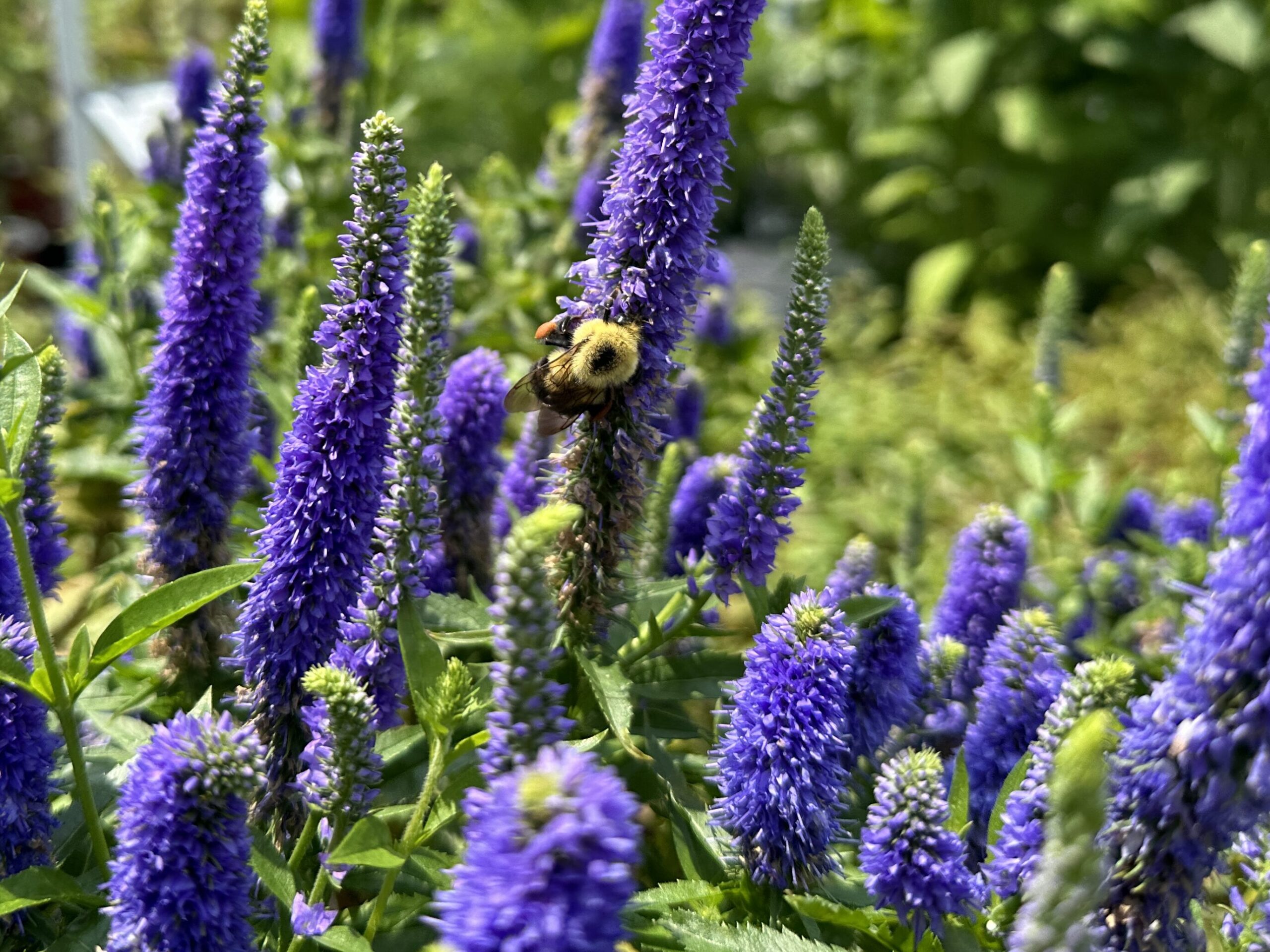
flies
Hoverflies, Common House Flies
Hoverflies often get mistaken for bees due to their coloring… but they are not! However, like bees, they are great pollinators and feed on nectar. Daisies, Queen Anne’s Lace, Alyssum, Cosmos, Lavender, Zinnias, and mint are great options for Hoverflies as they prefer small, flat flowers when the pollen is easy to access. Other flies, like common house flies, are attracted to dull colors and strong scents that tend to smell bad to people.
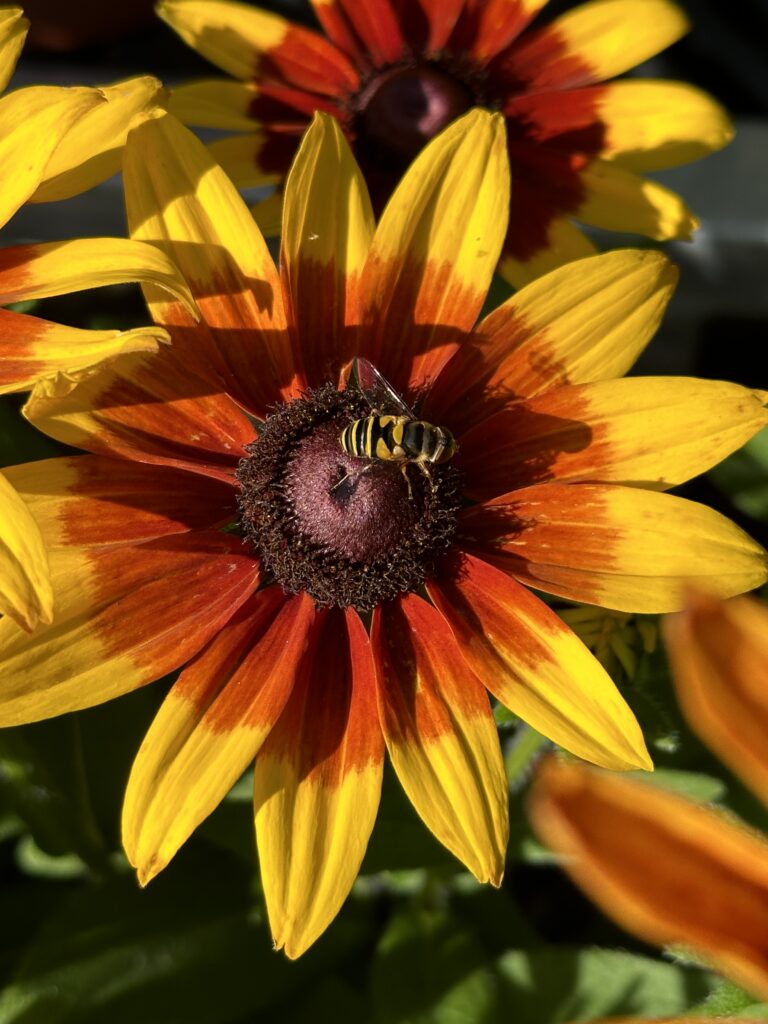
WASPS
Yellow Jackets, Paper Wasps, Mud Daubers
Though wasps are mainly carnivorous, they need to supplement their diet with nectar and do visit flowers! Their flowers of choice are usually white or yellow with unusual order and exposed nectar. Some flowers that wasps tend to feed from are Yarrow, Fennel, Goldenrod, and Rudbeckia.
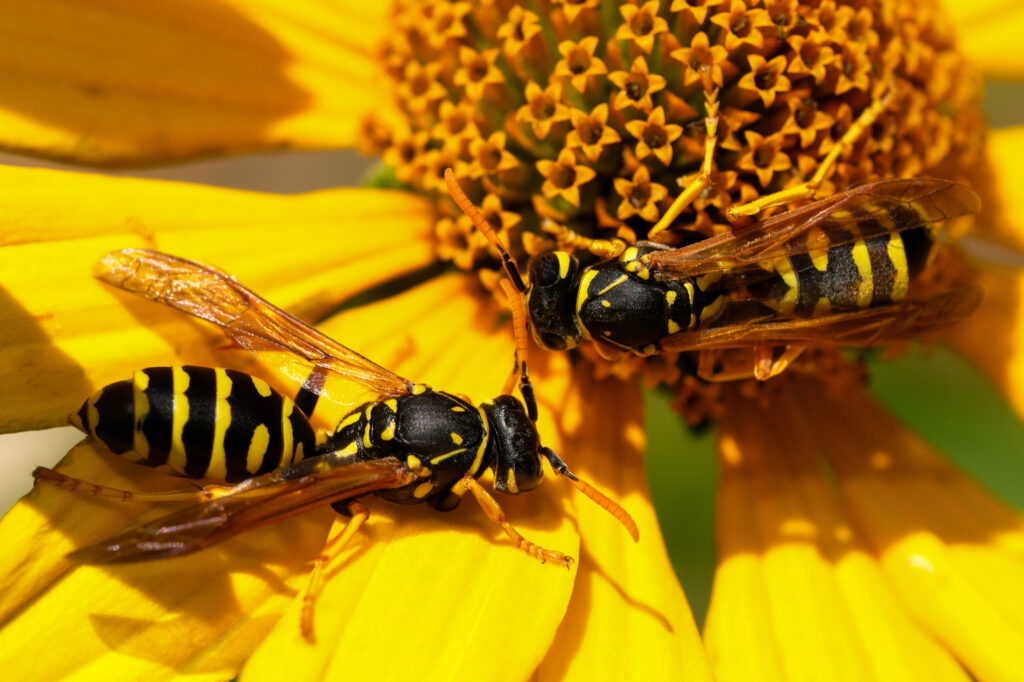
moths
Hummingbird Moth, Banded Woollybear Caterpillar Moth, Adjutant Wainscot Moth, Milkweed Tussock Moth
As the sun goes down, moths take over pollination duties! They are just as important, and often more efficient than bees and butterflies. Plant white or pale red, pink, and purple flowers with ample nectar, and include host plants like ferns, grasses, and shrubs. Light colors reflect moonlight, making it easier for moths to locate them in the dark. Some good options for moths include Petunia, Honeysuckle, Morning Glory, Tobacco, Yucca, and Gardenia.
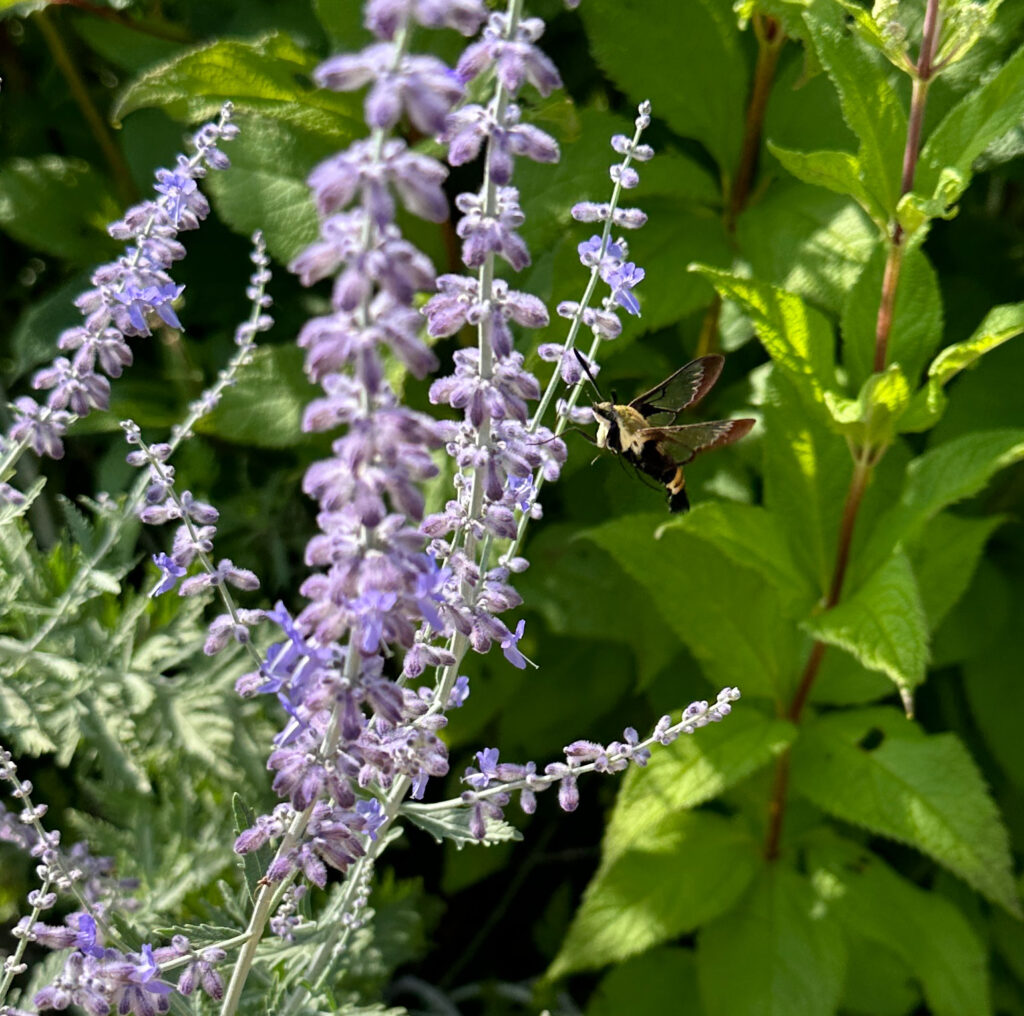
butterflies
Monarch, Cabbage White, Eastern Tiger Swallowtail, Silver-Spotted Skipper
Butterflies collect pollen on flat, open, or clustered flowers with landing pads and a pink, purple, orange, red, or white flower hues. Adding some stones or pebbles can attract butterflies, as they need sunny spots to rest and recharge. Some great plants to include are Lilac, Milkweed, Joe-Pye Weed, Goldenrods, Tickseed Sunflower, and Aster.
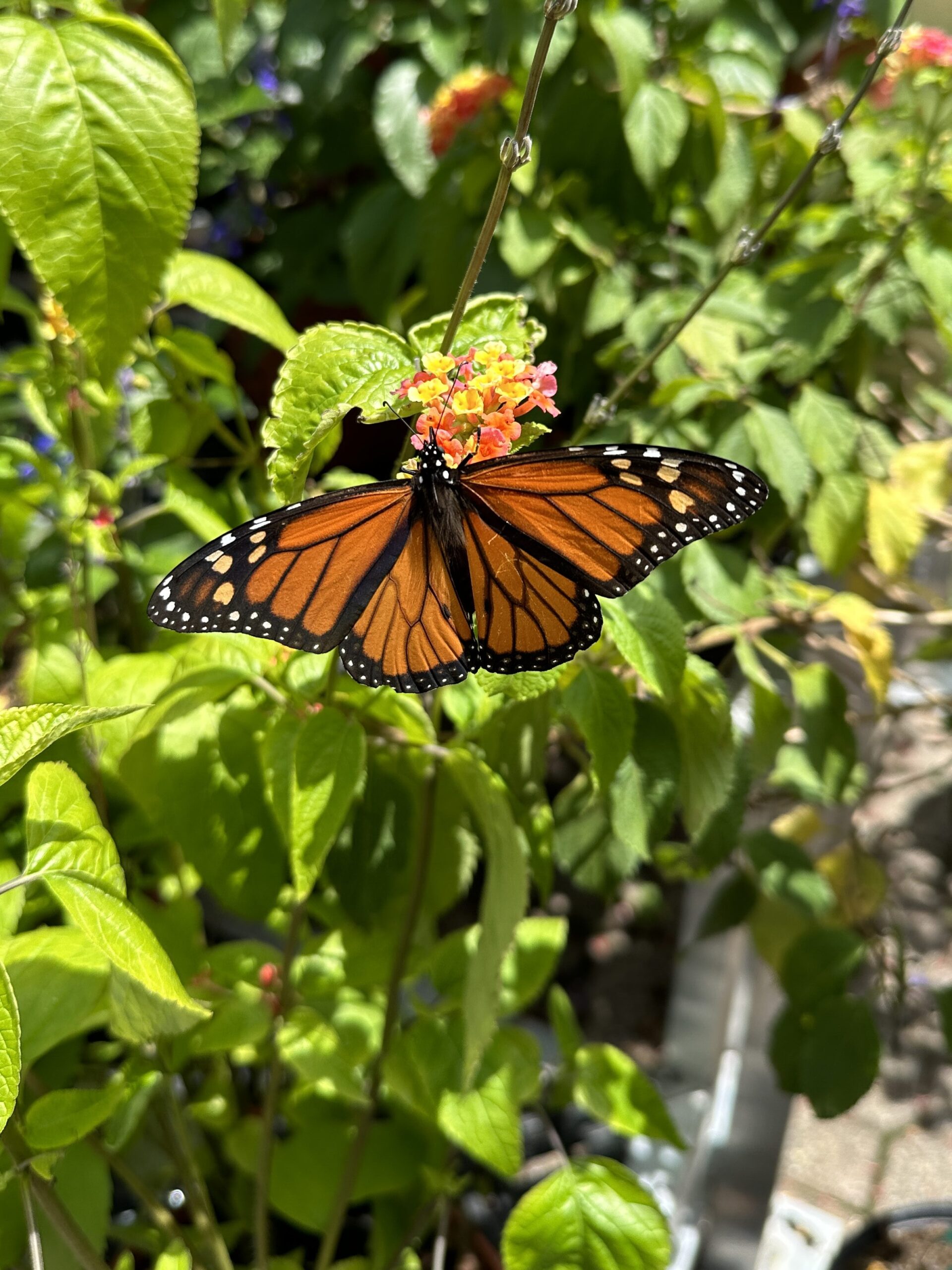
birds
Hummingbirds, American Robin, Northern Cardinal
Hummingbirds have long beaks and tongues that allow them to reach nectar from long, tubular flowers, which is their preferred shape. They can see the color red, unlike bees, and are drawn to bright shades of red, orange, purple, and pink. Other types of birds can help spread seeds by eating the berries of many plants. Flowers like Monarda, Foxglove, Cigar Plant, Salvia, and Agastache, are great for Hummingbirds while Inkberry, Vibernum, Crabapple, and Blackberry bushes will attract songbirds.
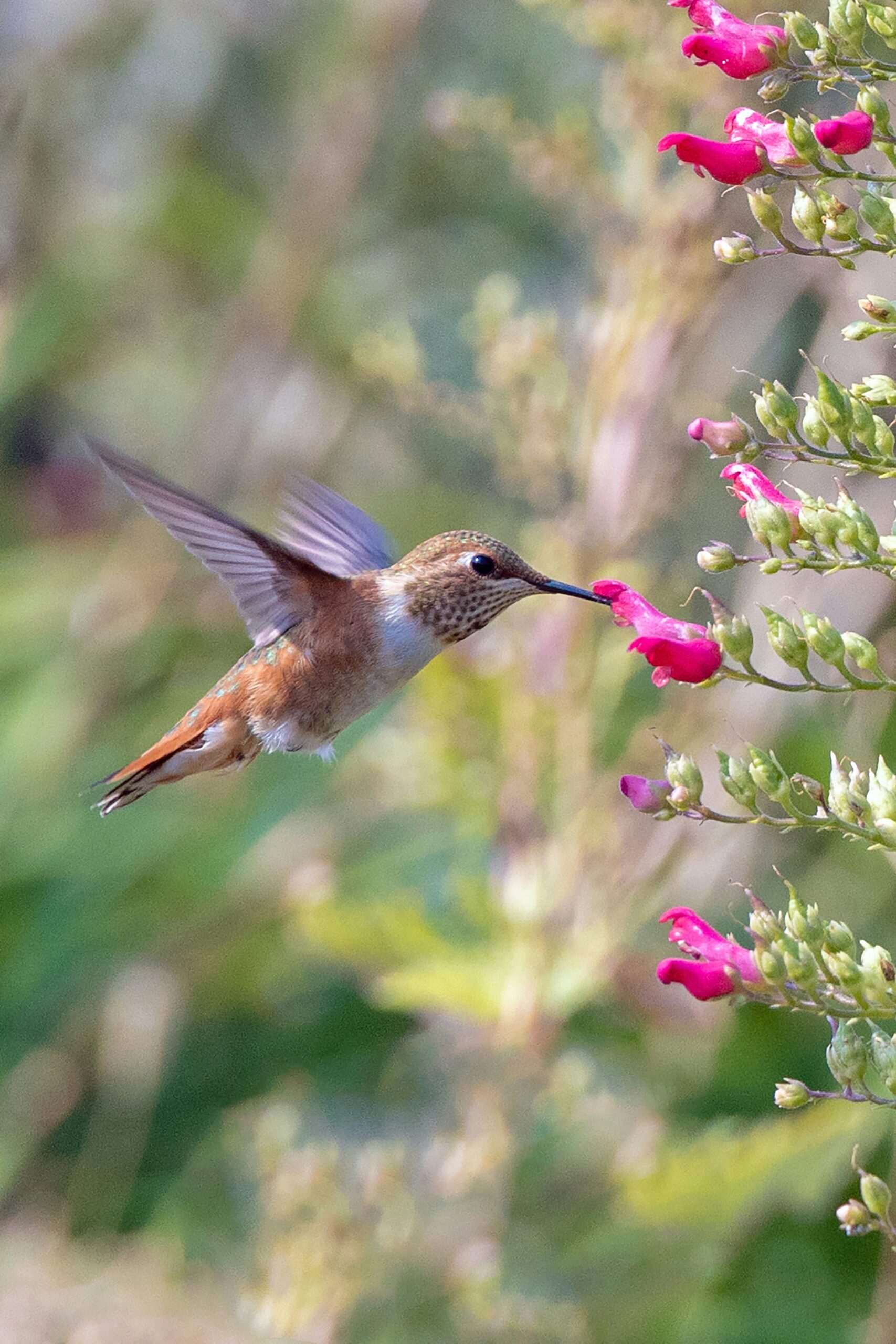
Sources & Info:
Butterfly Pollination. www.fs.usda.gov/wildflowers/pollinators/animals/butterflies.shtml.
Hansen, By Jolene. Draw Pollinators Like Bees, Birds and Butterflies to Your Garden. www.gardentech.com/blog/garden-and-lawn-protection/gardening-for-bees-birds-and-butterflies.
“Moths-The Forgotten Pollinators (Monroe County).” Master Gardener, extension.psu.edu/programs/master-gardener/counties/monroe/news/moths.
“Pollinator Information.” CT.gov – Connecticut’s Official State Website, portal.ct.gov/caes/publications/publications/pollinator-information.
Regional Butterfly and Moth Information | Butterflies and Moths of North America. www.butterfliesandmoths.org/identify/region/Connecticut.
Wasps, Surprisingly Cool Pollinators – Maryland Agronomy News. 31 Aug. 2020, blog.umd.edu/agronomynews/2020/08/31/wasps-surprisingly-cool-pollinators.
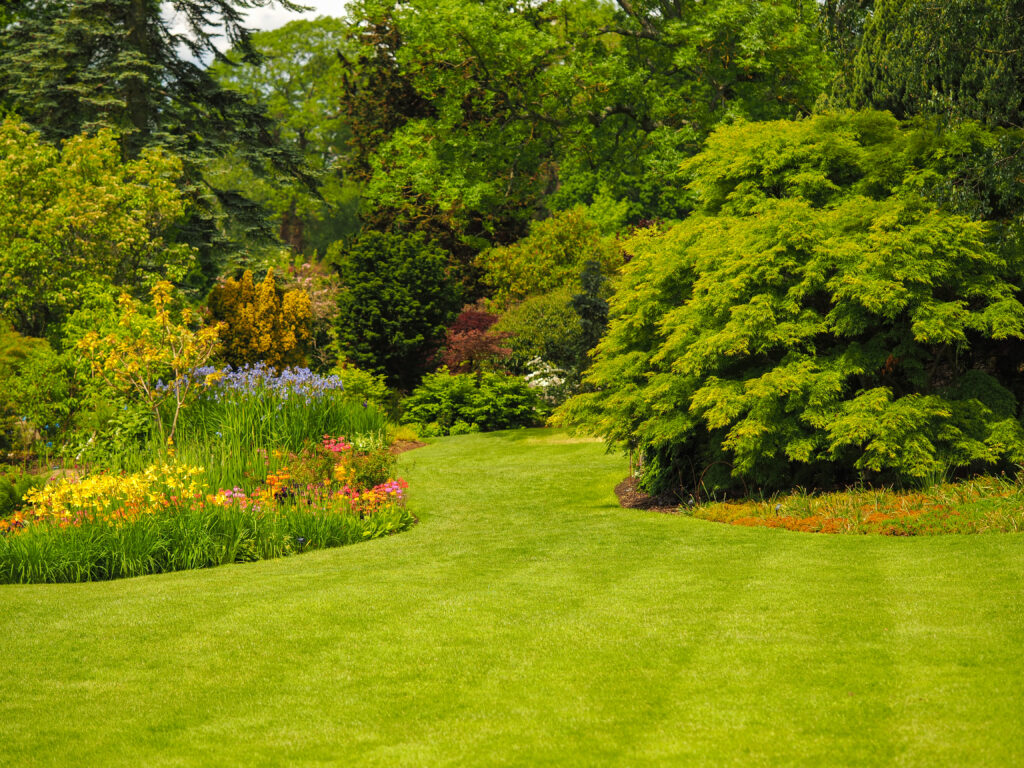
Summer may be a fun time for us… but it can be harsh on your grass! High summer temperatures and humidity, aggressive weeds, and pests commonly cause a decline in lawn appearance and health this time of year. Keep an eye out for browning, crunchy texture, wilting, and curling – these are all telltale signs of stress. Below are some recommendations to ensure your lawn doesn’t get to this point.
1. Water: Your lawn needs a minimum of 1 inch of water per week. If Mother Nature does not provide this, it’s time to set up some sprinklers! During the summer, it is more important to give your lawn a deep soaking. Instead of running your sprinklers for 20 minutes per day, try every other day for a minimum of an hour. This way, water will seep deeper into the soil, encouraging deeper grass root growth. Water in the early morning to avoid evaporation and disease promotion caused by late-day watering.
2. Mow your lawn high: Keep your grass at least 3 inches long. The taller your grass blades are, the softer, cooler grass you have to run your toes through, and the better the chances of your lawn’s survival. A taller grass blade has more surface area and provides more shade for the grass below, therefore, the ability to retain moisture is better. Also, don’t mow your lawn if the temperature is over 90 degrees!
3. Let the clippings fall: Grass is approximately 80% water. If you leave the clippings on the lawn, they give back moisture and act as a “green” fertilizer, providing a gentle Nitrogen feed for your lawn.
4. Keep your mower blades sharp: Believe it or not, the sharper your mower blades, the softer the grass will be. Grass cut by dull mower blades is more vulnerable to diseases and drying out. Don’t mow off more than a third of a grass blade at a time. If you mow off more, you will stress out your lawn, making it much more susceptible to burnout.
5. Treat for grubs: Now is the time to apply Bayer’s Season Long Grub Control. Grubs will be hatching and lurking beneath your feet, eating the roots of your lovely lawn. Don’t wait! Apply Bayer’s Season Long Grub Control through mid-August. Be sure to water it in or apply it before heavy rainfall. The more rain it gets, the better it works.
6. Fertilize: Give your lawn, a non-burning summer feed! Milorganite is a great choice. It is organic, non-burning, and has Iron for quick green-up. Espoma also makes a nice, organic Summer Revitalizer, perfect for this summer heat.
7. Green Up: Boost the appearance of your lawn with Earth Science’s Fast-Acting Iron or Iron Pro! We recommend these because they will not stress out your grass during the summer heat and work in just days without burning or staining.
Visit our solution center at Van Wilgen’s. We would love to help!
It’s that time again when the famous cheery yellow blooms of Sunflowers begin popping up everywhere! These plants are a staple of early summertime and look amazing on the patio. Have you seen Sunfinity Sunflowers around and wondered what makes them different from the loved traditional sunflower? Continue reading below as we point out some of the benefits of going with a Sunfinity plant.
What’s the Difference?
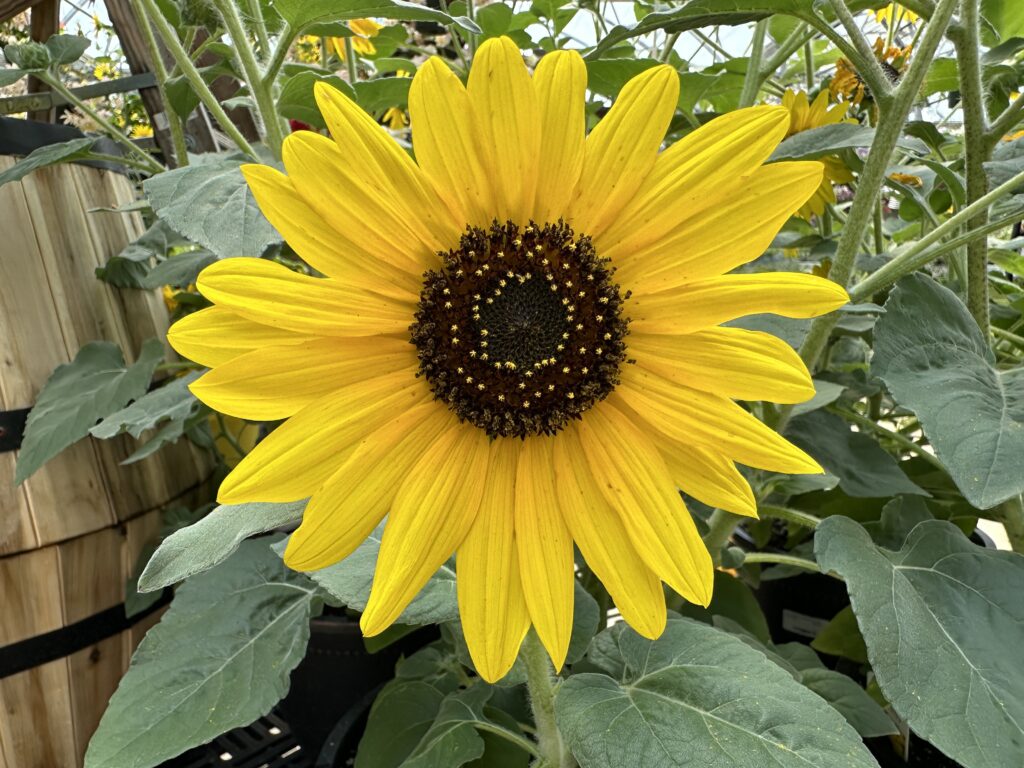
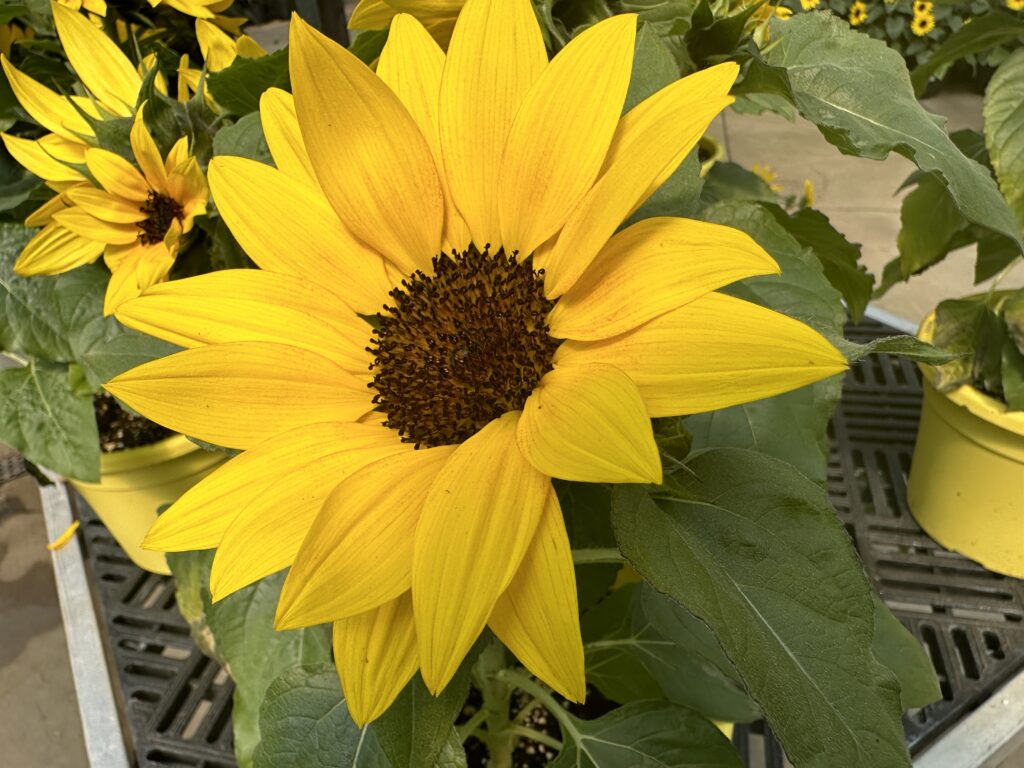
Sunfinity Sunflowers improve upon the traditional blooms in many ways. Did you know the blooms of traditional sunflowers only last about 7 to 10 days? Sunfinity plants offer similar large, bright yellow flowers that continue to rebloom all summer! Each plant is capable of producing over 100 blooms in one single season. This makes them versatile and perfect for cut blooms and flower arrangements. Plus, you’ll never have to worry about deadheading since these amazing plants are self-cleaning. Don’t worry because you won’t miss out on all the pollinators! Sunfinity plants provide rich nectar, ‘buzzing’ all summer long.
Learn more about Sunfinity Sunflowers at https://mysunfinity.com/why-sunfinity and pick up yours today at your nearest Van Wilgen’s location!
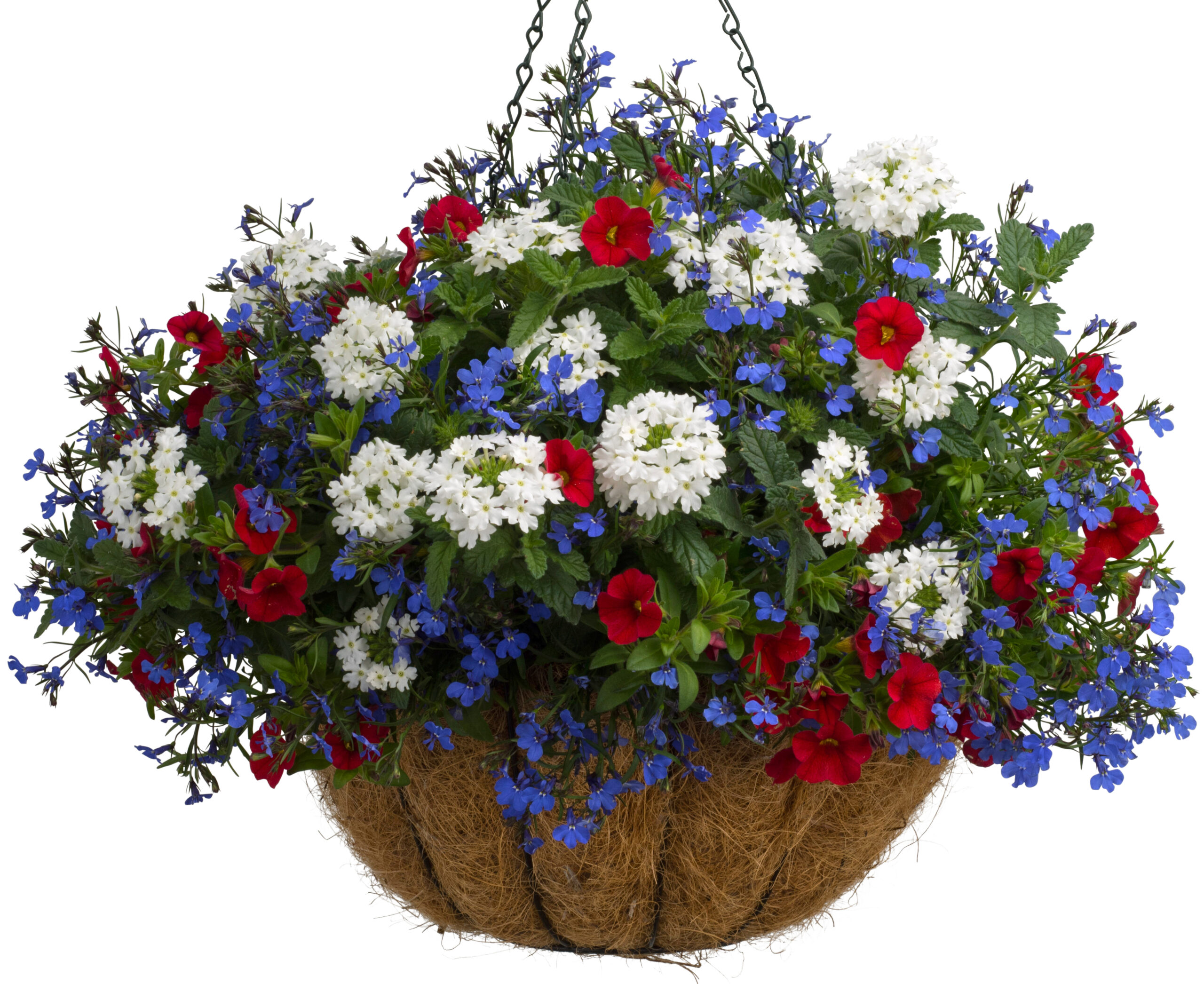
Get creative this Independence Day with your own red, white, and blue containers! What better way to celebrate than to spend time outdoors making the patriotic plant mix of your dreams? Pick out a plant or two of each color with similar soil and light requirements and varying textures for best results.
Not sure where to start? We always recommend the tried and true “thriller, filler, and spiller” method. Start by choosing a plant with some drama and height (thriller), add in a mid-height companion plant (filler), and then complete the arrangement with a hanging plant that will spill over the side of your container rather than grow upright (spiller). This method works well to give the appearance of a full arrangement. Just keep in mind the size of your container when choosing the size of your houseplants. You don’t want to have too much excess space or squeeze plants into a small container. You’ll also want to think about the mature size and shape of the plants you’re choosing.
Check out our list below for some of the best plant options in each color category for patriotic mixes!
Red Picks
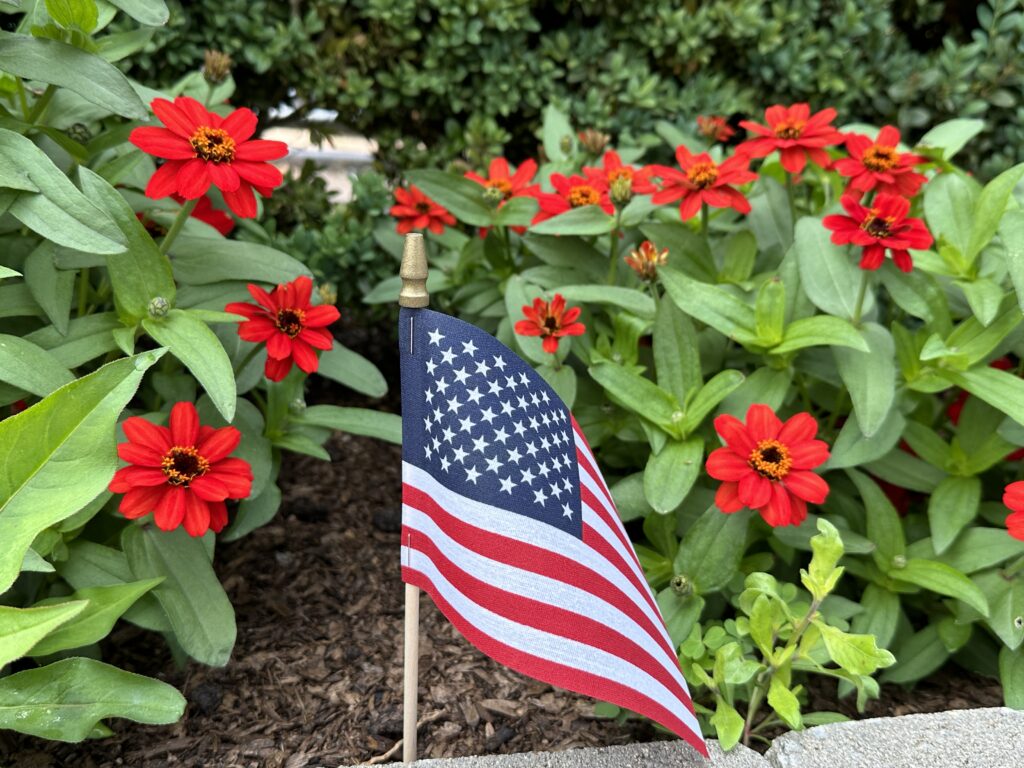
Full Sun
Sunpatiens, Zinnia, Geranium
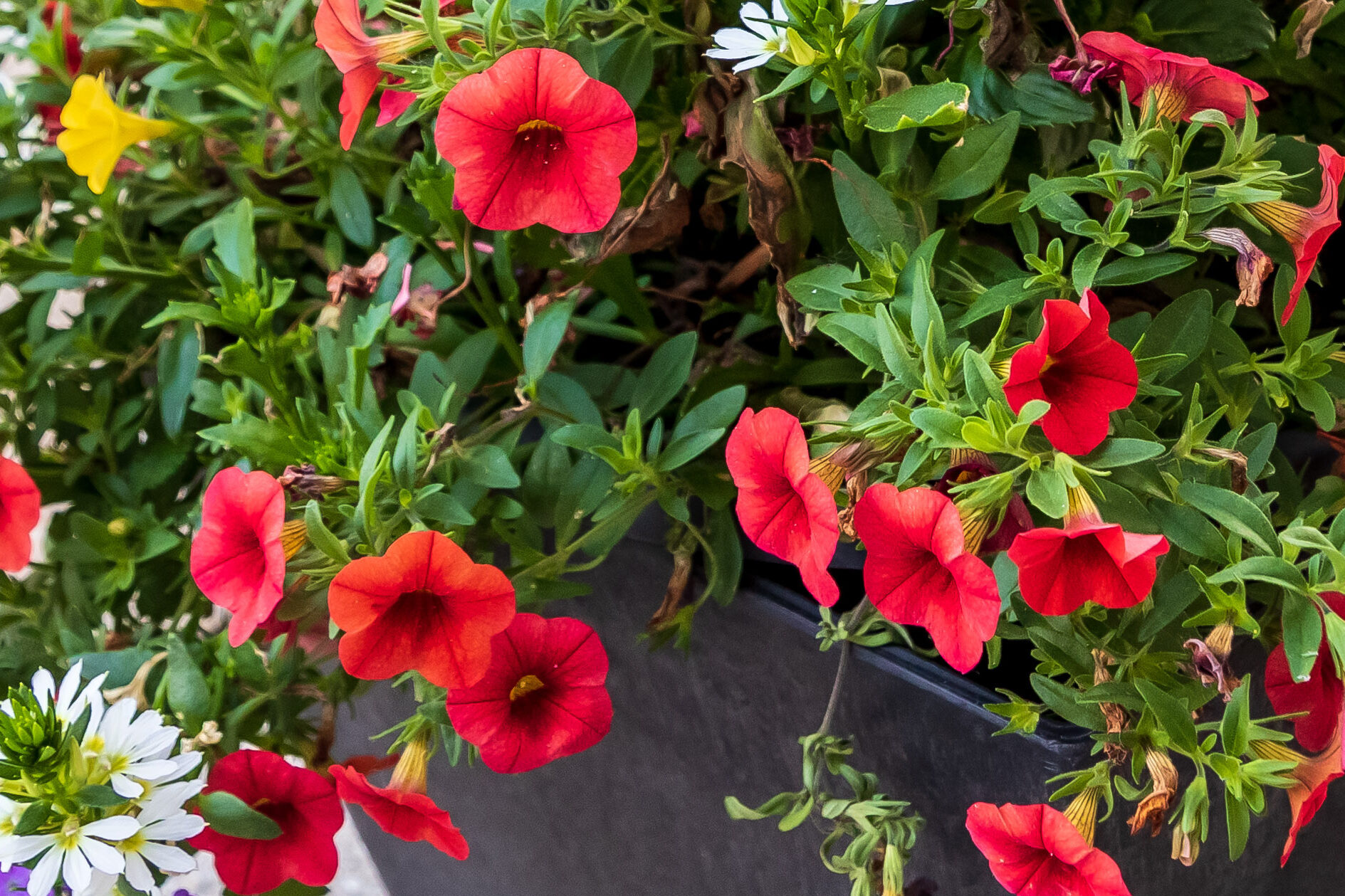
Part Sun
Red Calibrachoa Million Bells, Cigar Plant
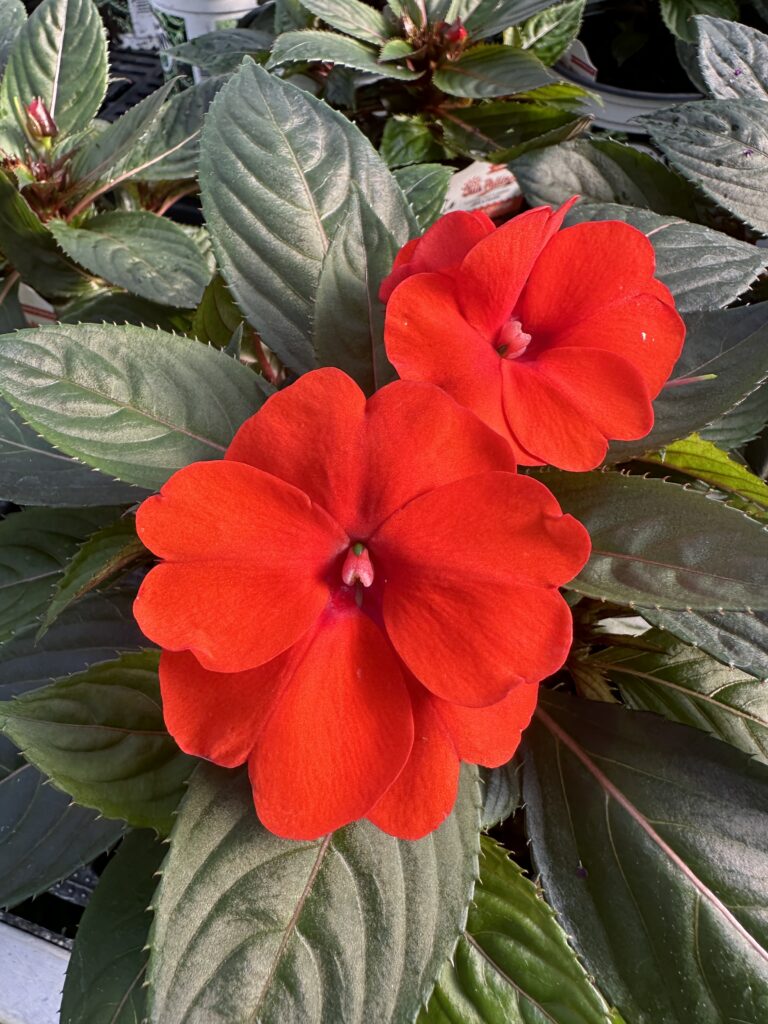
Partial to Full Shade
Coleus, Impatiens
White Picks
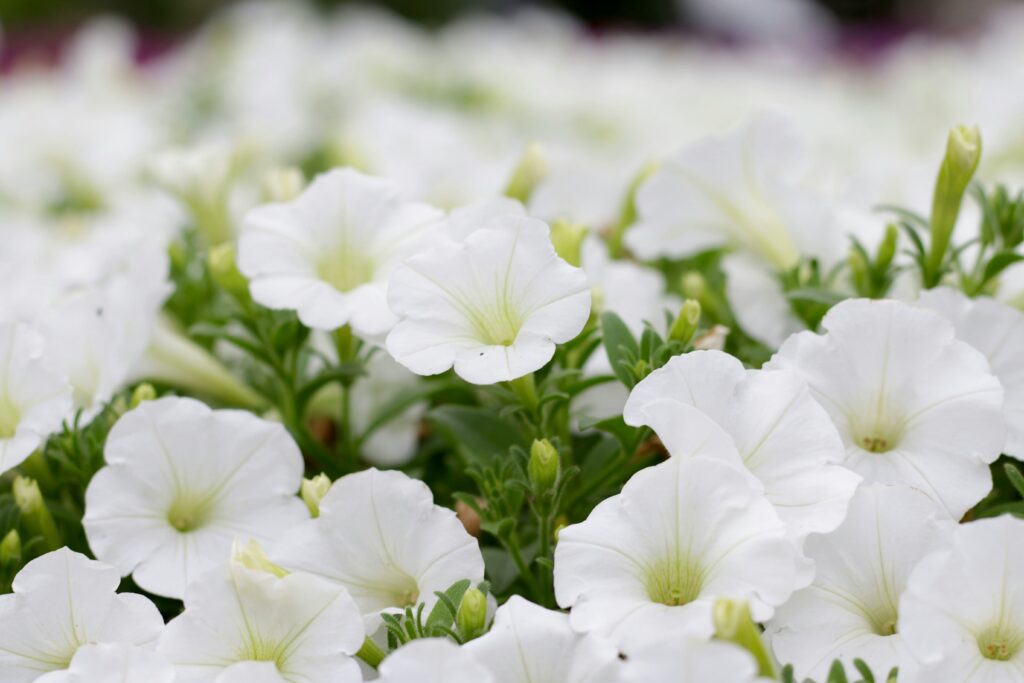
Full Sun
Petunia, White Sweet Alyssum, White Lantana, Dusty Miller
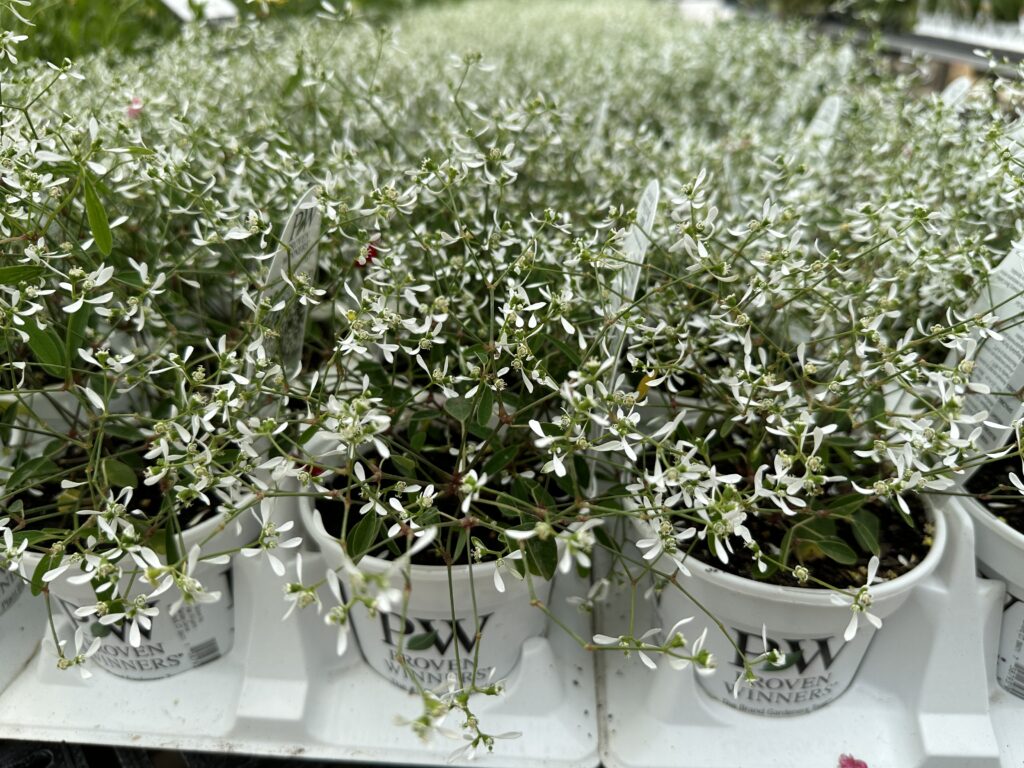
Part Sun
Diamond Frost® Euphorbia
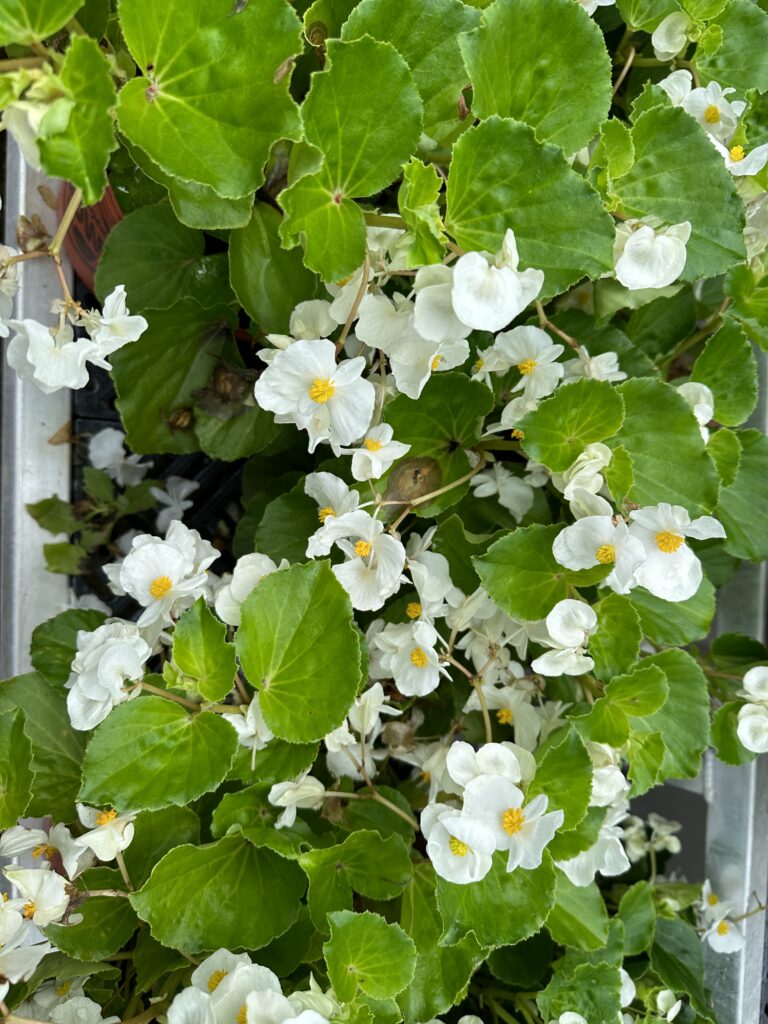
Partial to Full Shade
White Polka Dot Plant, Begonia
Blue/violet Picks
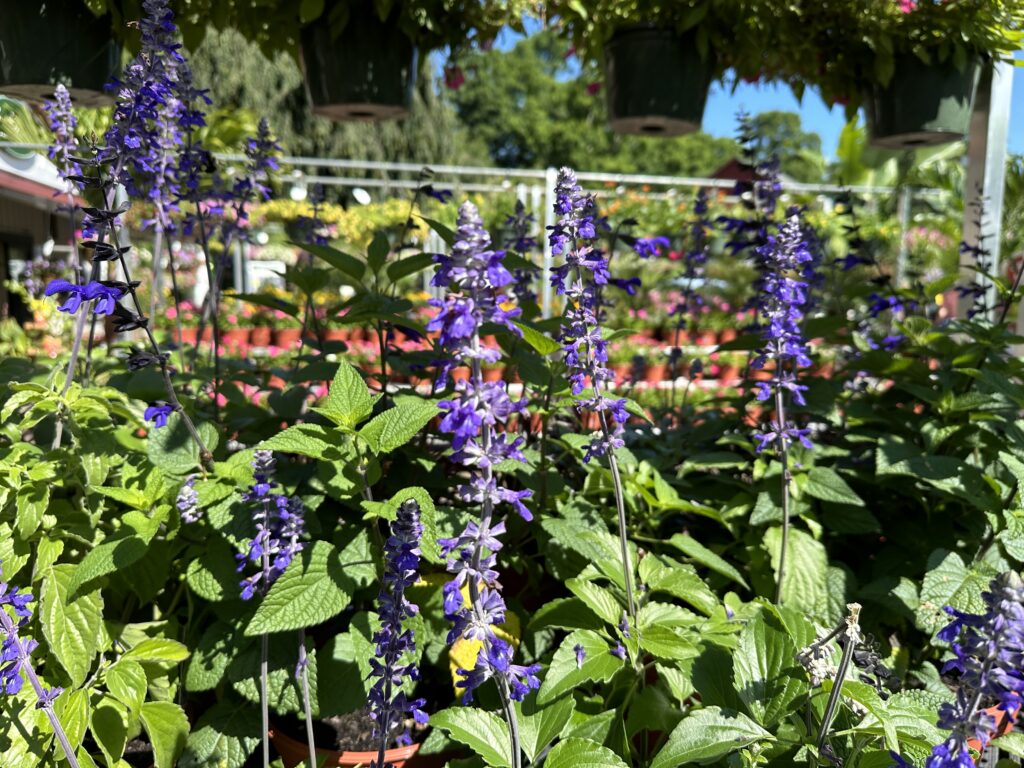
Full Sun
Blew My Mind® Euphorbia, Blue Morning Glory, Salvia
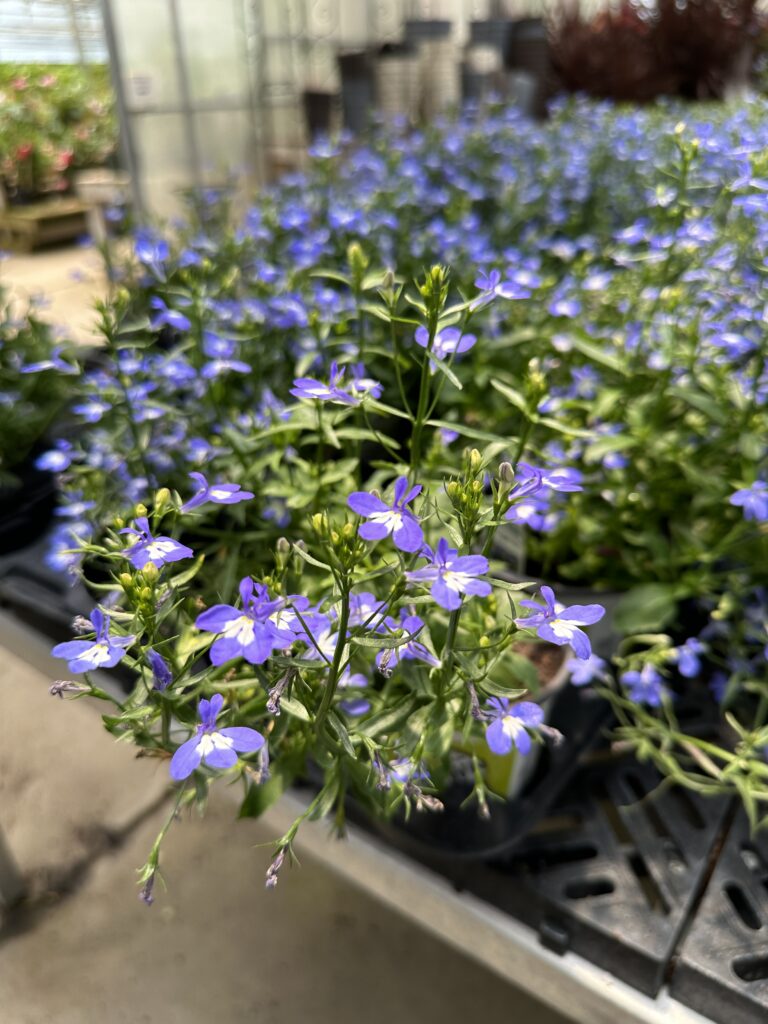
Part Sun
Blue Lobelia, Black and Blue Salvia
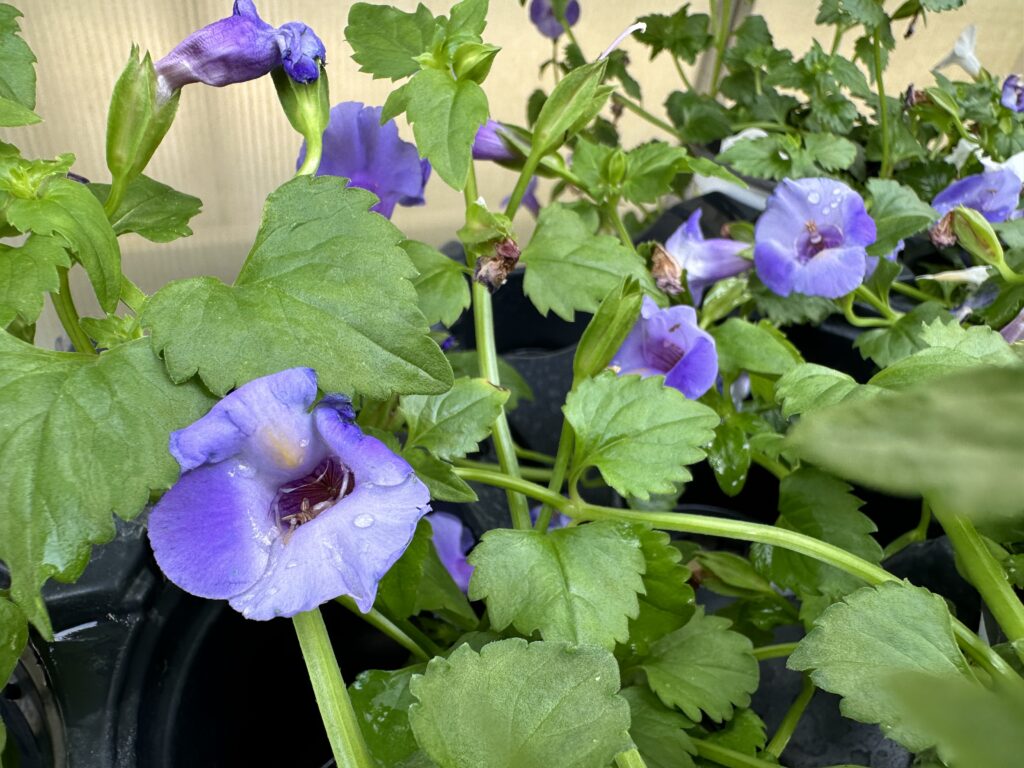
Partial to Full Shade
Superbena® Verbenas, Torenia
Questions about watering? The biggest thing is knowing when and how much to water your plants. We’ve compiled some tips to help you know when and how to water during those hot summer months.
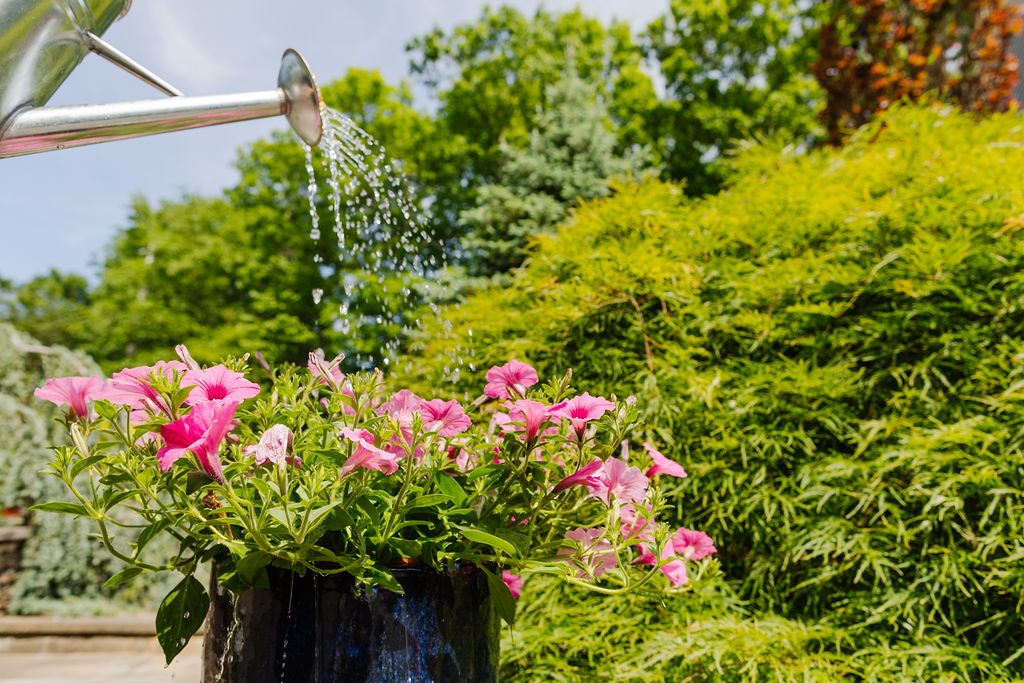
SIGNS YOU NEED TO WATER:
Wilting: One of the very simple to spot and most obvious ways to tell your plant needs water is whether the flowers and leaves are wilted. Wilting can also be an indicator of heat stress.
Yellow Leaves: When your plant’s leaves start to yellow around the edges AND the soil is dry, you need to water. Yellowing in leaves can mean one of two things. One, your soil is too wet, and the roots are suffocating. Or, two, your soil is too dry, and the plant is starving for water. Be sure to check the soil when you see yellowing leaves before grabbing the watering can.
Stunted Growth: If there is a change in the rate of growth of your plant, it could be time to water. Another indicator of stunted growth is seeing fewer blooms than you’d expect on an otherwise healthy plant.
Weight: When you are watering potted plants or hanging baskets, be sure to test the weight before and after you water to note the difference. The next time your plant needs water you can check the weight to determine how much water you may need.
Helpful Hints:
- On extremely hot summer days, run the hose water for a second before turning to water your plants. The hot water in your hose can also cause scalding or burn the plant.
- When you’re watering aim the hose or watering can directly at the base of the plant, focusing on the root system. Do your best to avoid getting water on the leaves if you can.
- Use a hose breaker to spread out and control the harsh stream of water.
- Saturate the entire root system when you’re watering to make sure you’re giving your plants the most nourishing drink.
- Use the weight test! This is a great method for checking the soil in your hanging baskets or potted plants. Once you see the watering draining from the pot in a steady stream, lift the basket and test the weight. You can also use a barbeque skewer or stick and put it down in the soil at least 3 or 4 inches deep. With a dry basket, your stick will come out clean. If your plant is fully saturated, it will come out dirty.
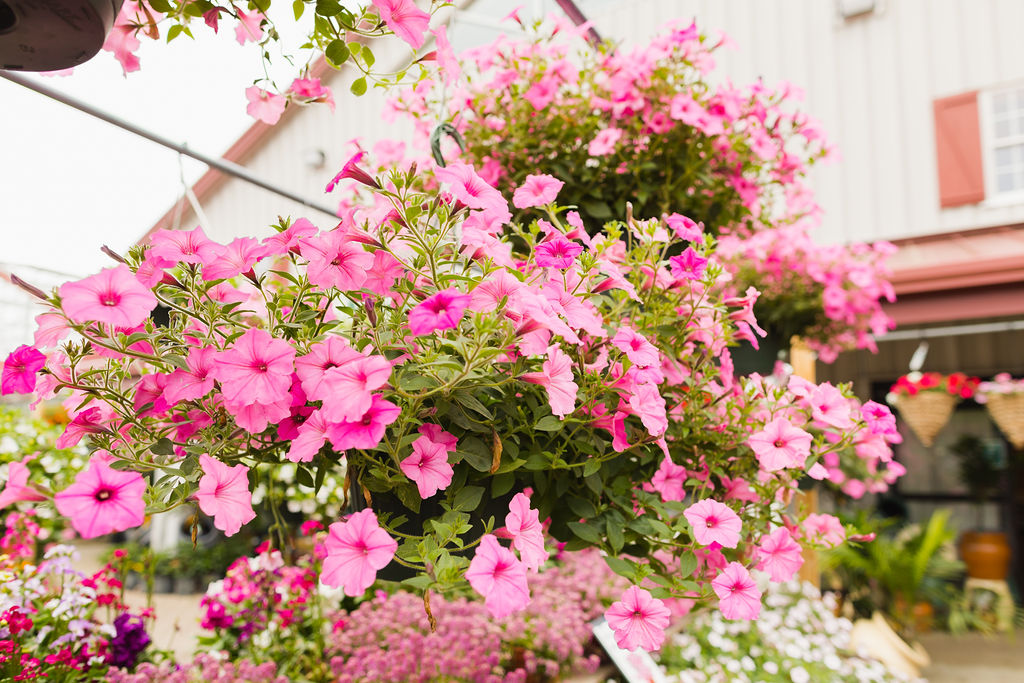
If you water your hanging baskets in the morning, you may want to check them again in the afternoons of July and August. In many cases, it is not uncommon to water your hanging baskets more than once per day, especially if it is very hot outside and your plant is in direct sunlight. Each time you water a hanging basket you must be sure you’re giving them enough. You need to make sure that you’re saturating the entire root system until water drains out the bottom of the pot.
Here is a printable guide to help you. Watering Guide_2022
(Hanging Baskets, Containers, Landscape, Window Boxes)
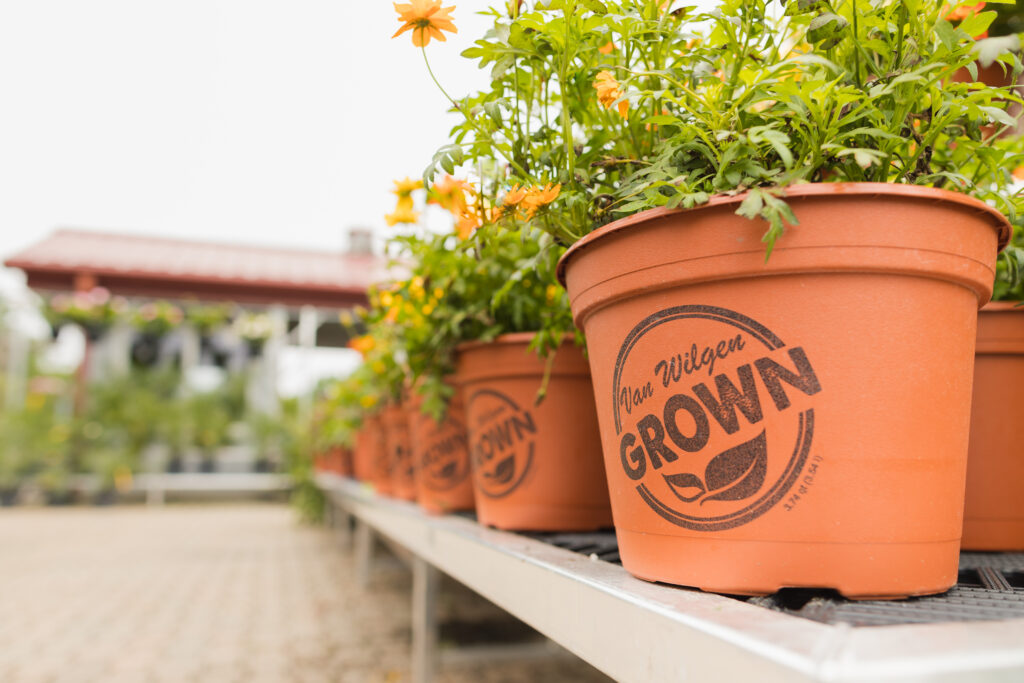
All plants need water, however, annual flowers need some extra care. They tend to have shallow root systems and are expected to spend almost their entire lives blooming repeatedly. If they become stressed, they either rush to set seed and not bloom again or slowly die.
A good rule for watering plants is to check the top inch of the soil: if it’s wet, no need to water. If it’s dry, it’s time for a drink! Water during the early morning when you’ll lose less moisture due to evaporation during the day.
Beds vs. Containers
Any plant grown in a container will dry out quickly, and annuals, with their shallow roots, will need water nearly every day. Check the top inch of soil – if it feels dry to the touch, water. You may need to water more than once a day in the extreme heat of summer. Adding Mulch, even in a container, can make an appreciable difference in water retention.
Annuals planted in flower beds may not need as much water as containers. It will depend on how well-drained the soil is and how much competition for water there is from other plants close by.
Specific Plant Needs
How much you’ll have to water depends on the plants you choose. Drought-tolerant annuals, such as zinnia, marigolds, and cleome, will require minimal watering; once a week will probably be fine. Others, such as snapdragons, alyssum, and impatiens need regular water, or they will suffer stress.
Your plants will be the best indicator of when to water and hint to whether or not you are giving them enough to drink. When annuals don’t get enough water, they can look pale or dull and wilt quickly. If they are wilting during the day and reviving at night, you can be certain that they need more water during the day’s heat, additional mulch, or a shadier spot.
The signs of over-watering are similar to under-watering, pale leaves, and wilting. You should be able to determine which it is by pushing your finger into the soil and checking to see if it is soggy or bone dry. The water needs of your annuals vary with the weather and the seasons, and you should adjust accordingly.
Are you looking to expand your perennial gardens with fresh new plants for the summer? Look no further! In the spirit of June being National Perennial Month, we’ve curated a list of our favorite perennials to give your garden beautiful color and summer interest.
Coreopsis ‘moonbeam’
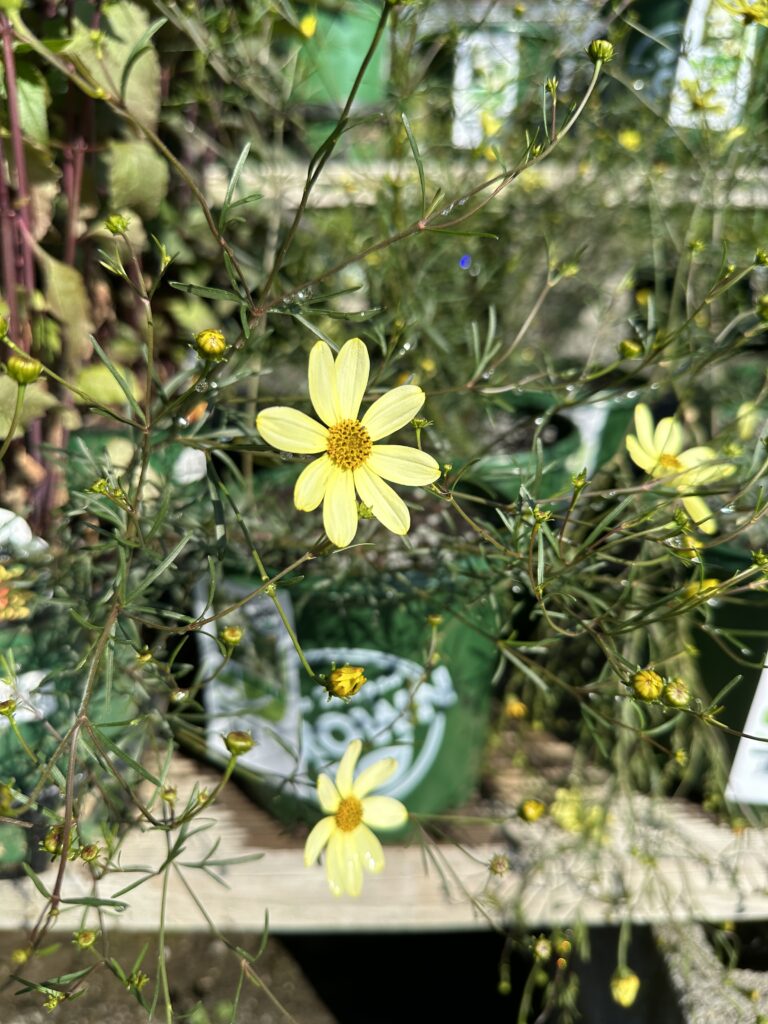
Coreopsis are lacy, airy flowers that rebloom with ease in the summer heat! ‘Moonbeam’ features soft yellow blooms that are in color from late spring/early summer all the way through mid-fall! Keep them dry and hot for best results.
Geranium ‘Rozanne’
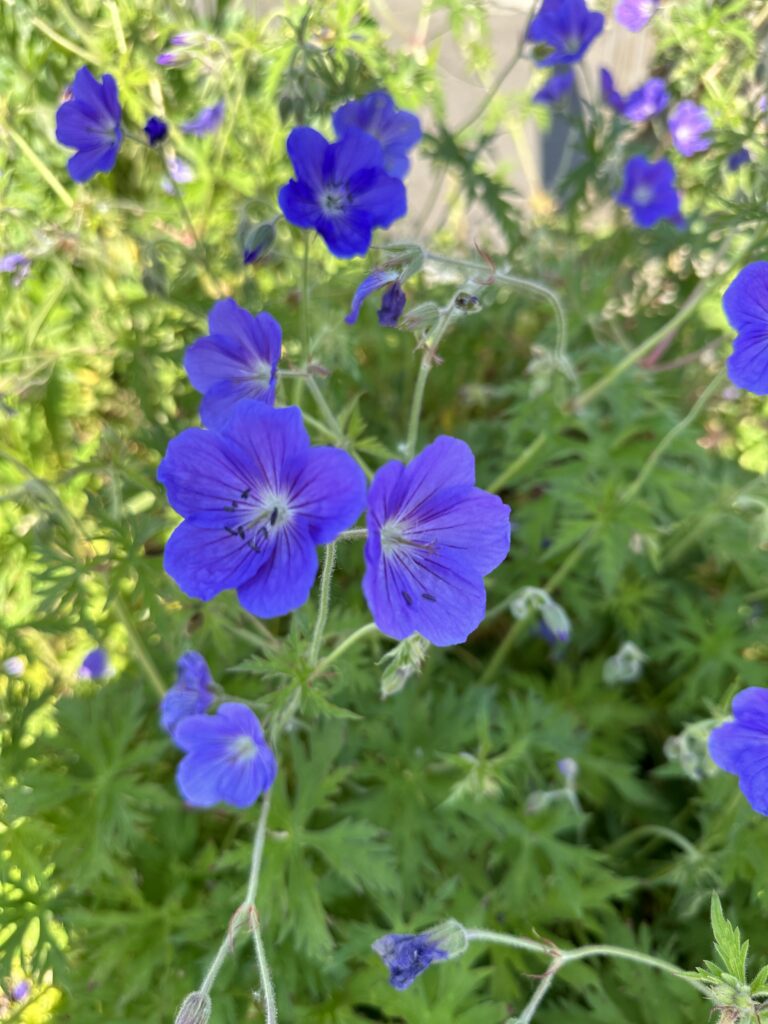
An excellent long-blooming option to get sought-after blue flowers in your garden! This stunning plant will give you color from early summer through fall. It is also a great pollinator plant while resistant to common pests and diseases.
Shasta Daisy
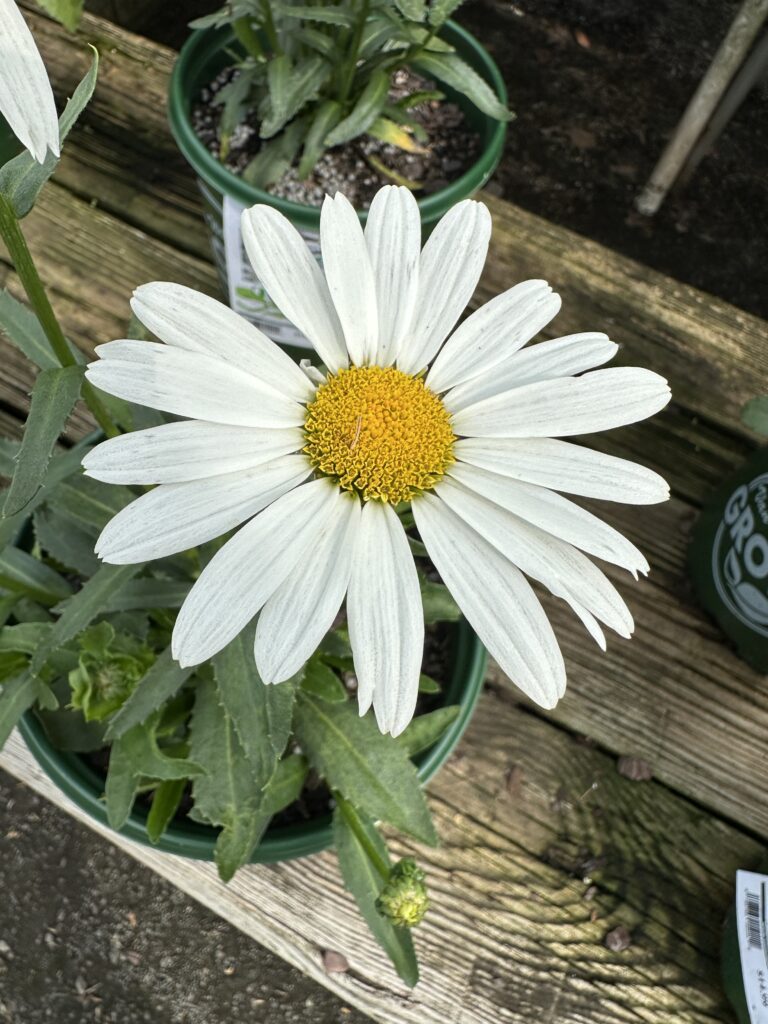
Shasta Daisies are a staple in the garden. These cheery white to pale yellow flowers typically bloom during the summer, but the exact time frame depends on the variety. Great for pollinators and cut flowers!
Digitalis ‘Arctic Fox Rose’
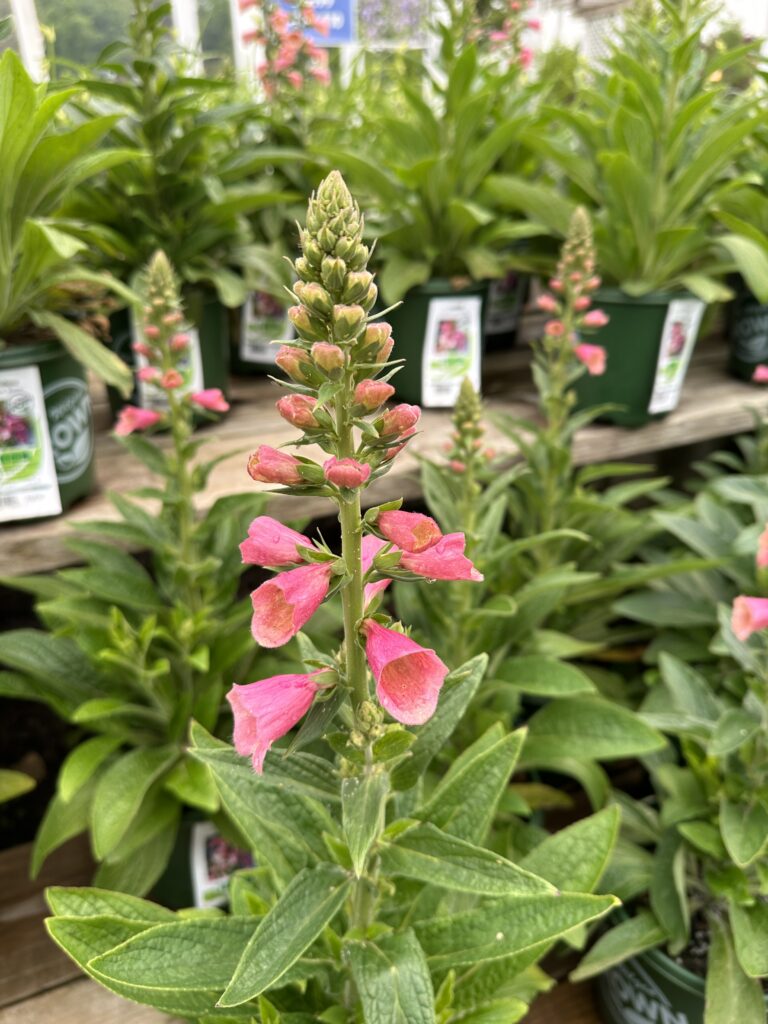
A true perennial foxglove! ‘Arctic Fox Rose’ blooms from late spring through summer and is an excellent option for attracting hummingbirds.
Lamium ‘Purple Dragon’
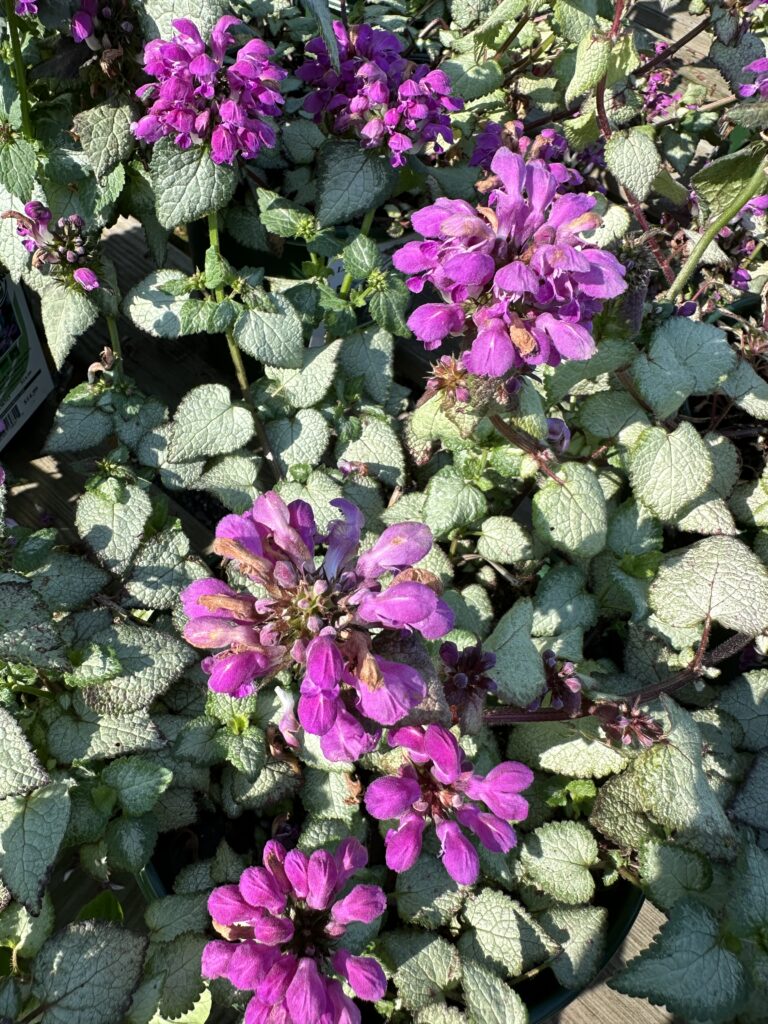
Lamium is the perfect plant if you’re looking for a long-blooming, groundcover option for part to full shade. ‘Purple Dragon’ shows off its magenta-purple flowers from late spring to fall and is also bee-friendly!
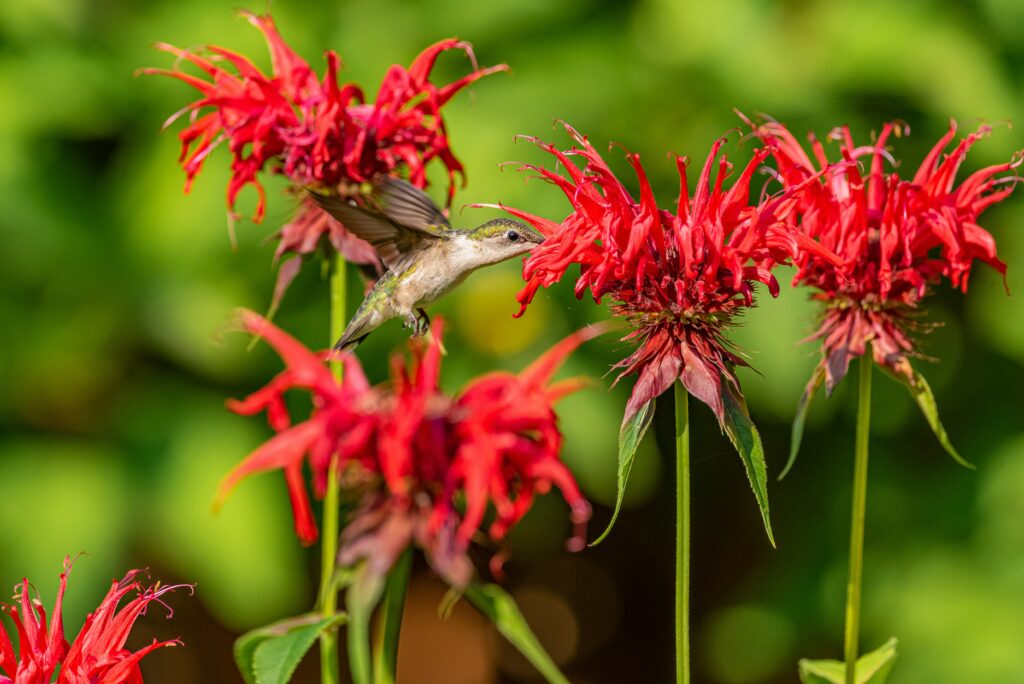
Forget the thermometer, you know when the warm weather’s here when you see hummingbirds! Hummingbirds are incredibly smart little birds, capable of navigating great distances and clever enough to return to their previous summer’s feeding grounds. Their diet consists of nectar and small insects, with flower nectar as their main preference. To attract them, plant a yard full of nectar-rich plants. June is an excellent time to plant, so get out in the yard and start on your hummingbird garden with some of their favorite annual and perennial picks below!
PERENNIALS
Foxglove
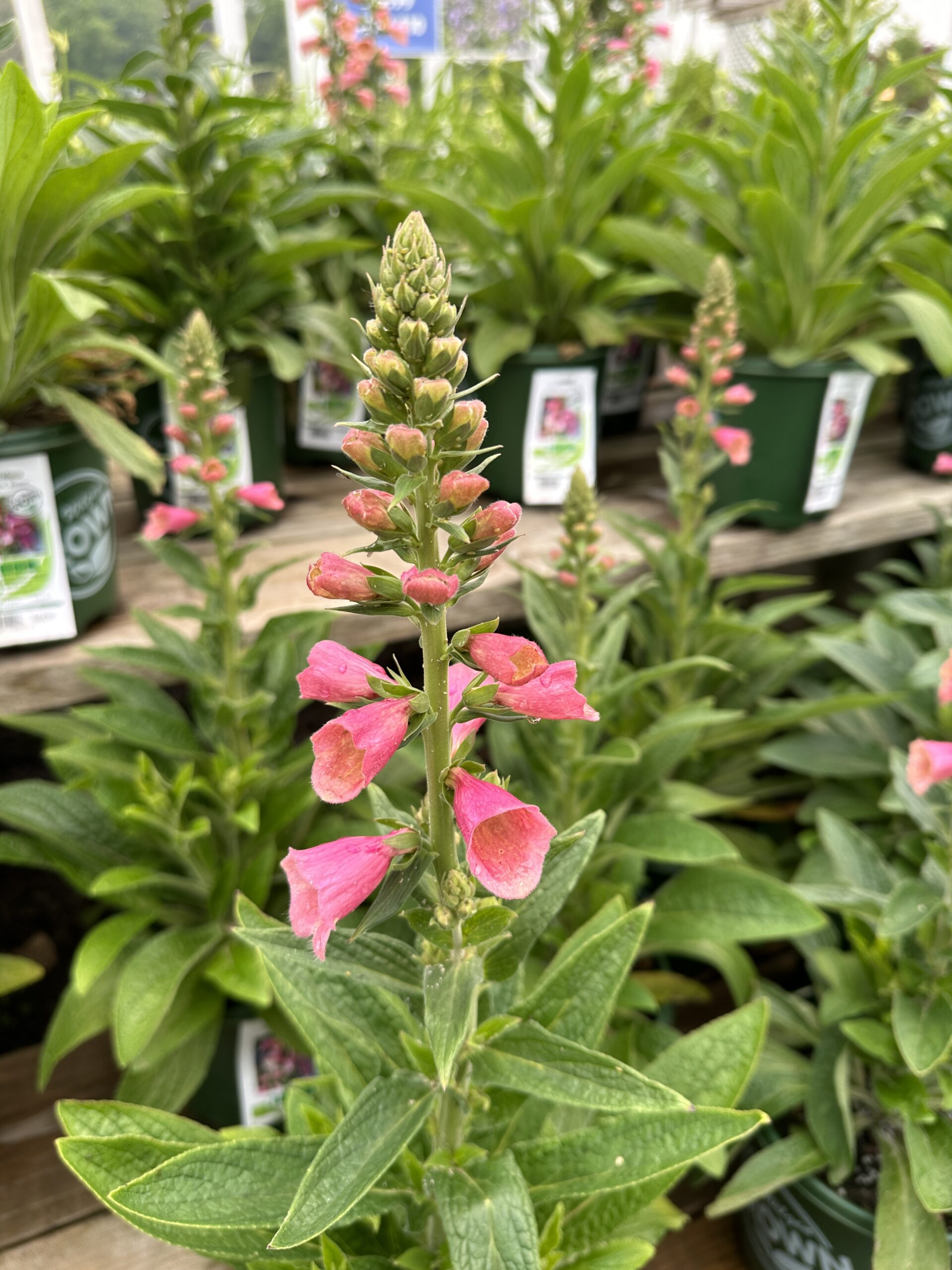
Foxglove offers a ton of nectar in their tube-shaped flowers which hummingbirds and bees love. They also come in a beautiful variety of colors like deep pinks, peach, and purples, and have unique speckled throats.
Monarda (Bee Balm)
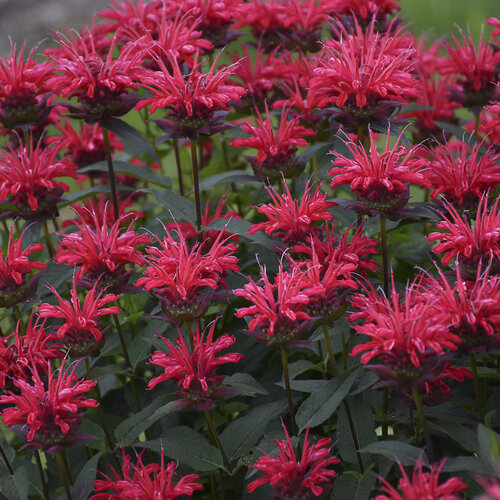
Photo Courtesy of Proven Winners: www.provenwinners.com
Bee Balm is surging in popularity as it is a well-known favorite of hummingbirds and one of the best options to attract them! It is also attractive to butterflies and bees, so you will see a ton of pollinators coming to visit. This plant does best in full sun, but can be grown in partial shade.
Hosta
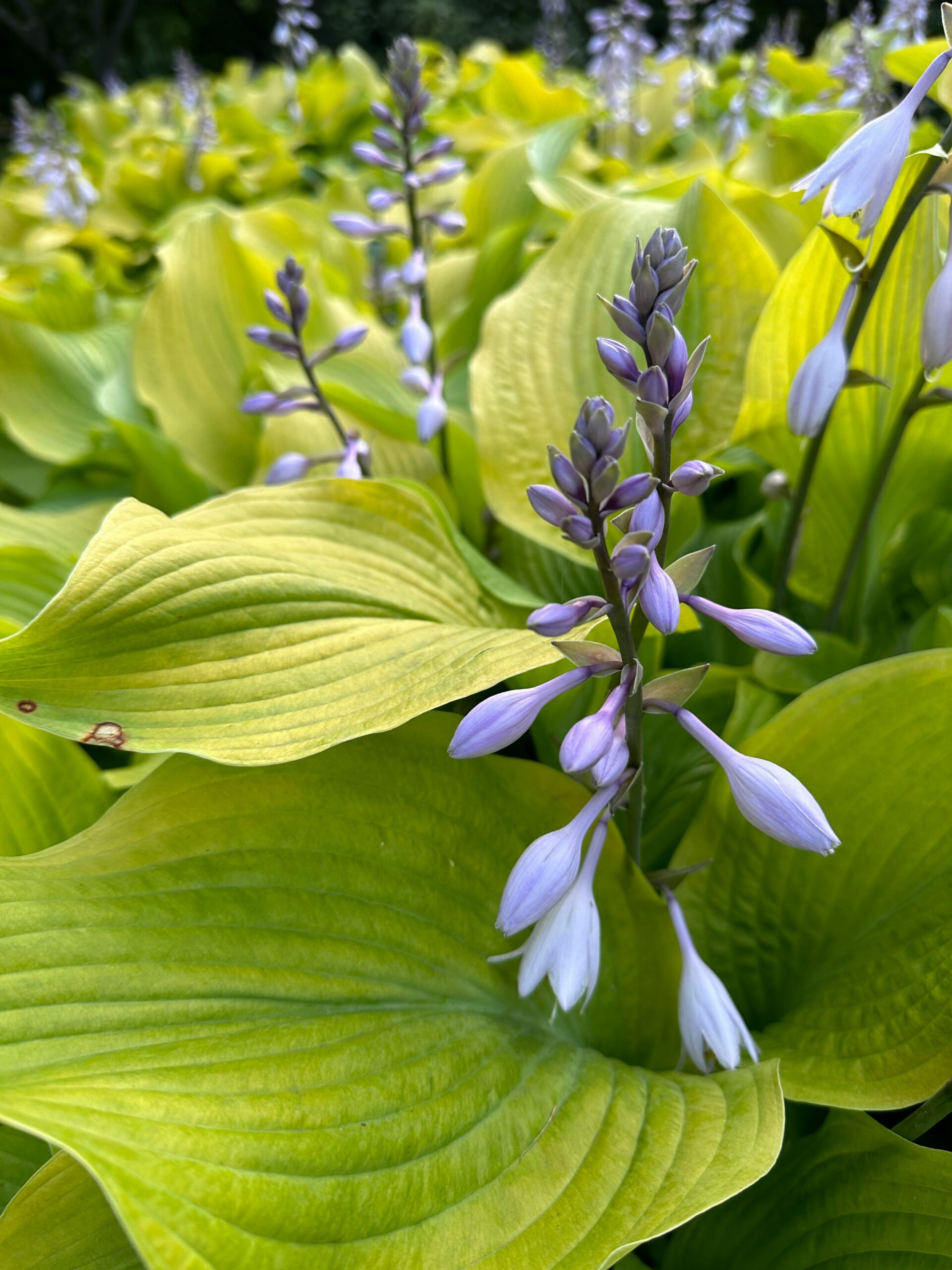
This popular shade perennial is also a great choice for hummingbirds during their bloom period! Hostas usually flower for about 3-4 weeks between May and September, depending on the variety. Choose a more fragrant variety like ‘Stained Glass’ or ‘Royal Crest’, since hummingbirds tend to prefer these over less fragrant ones.
Gaura
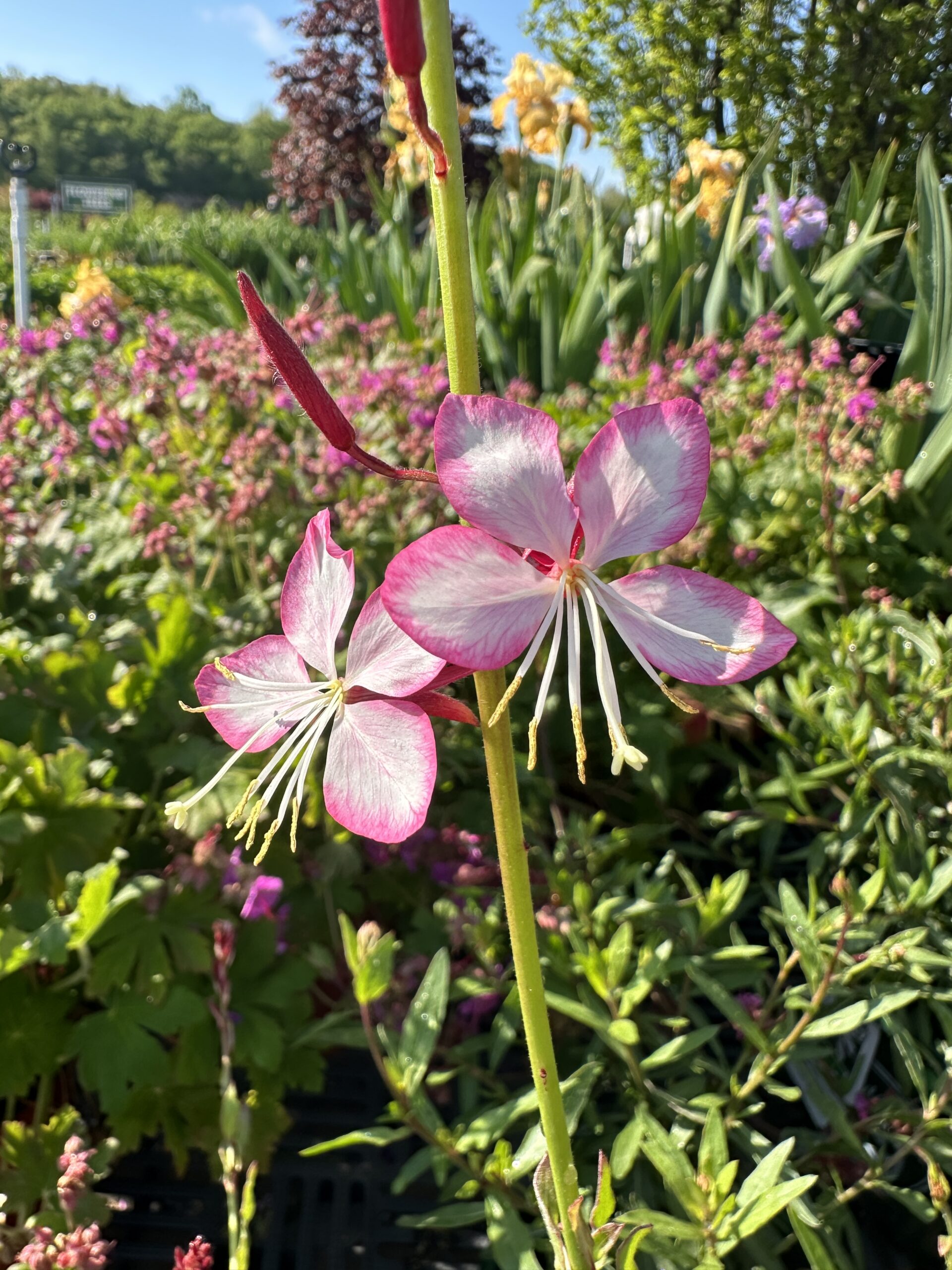
Gaura is an excellent low-maintenance perennial option with good drought tolerance, perfect for withstanding high heat! Put this in your pollinator pathway and watch bees, butterflies, and hummingbirds enjoy them.
ANNUALS
Salvia guarnanitica
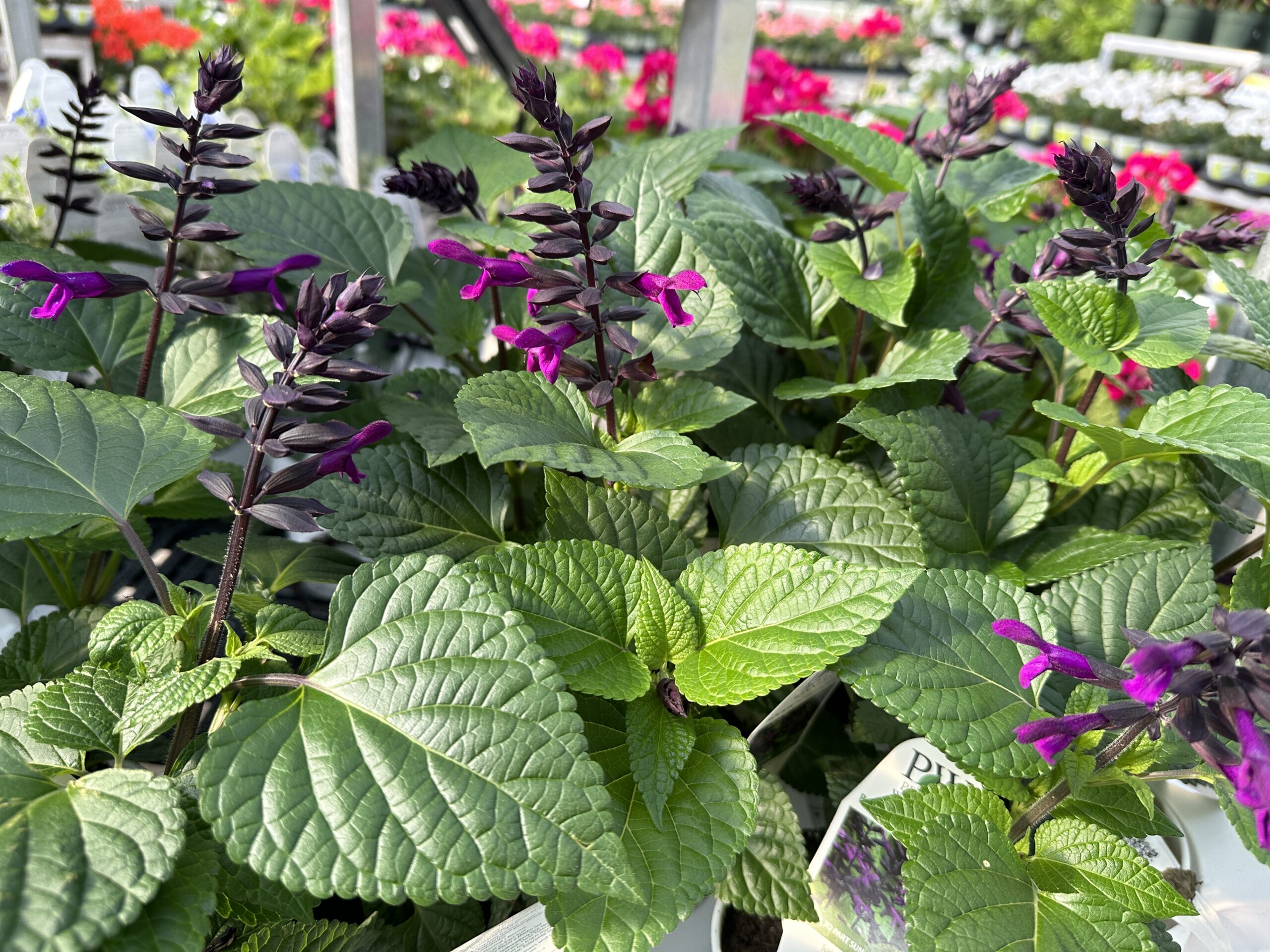
This annual is a fabulous summer performer for full sun and an excellent hummingbird magnet. 2 to 3′ tall spire flowers begin in May and continue until October. This salvia dispels the myth that hummingbirds only frequent red flowers. Yes, these little birds are attracted to reds but forage from countless other colors too!
Cuphea ignea “cigar plant“
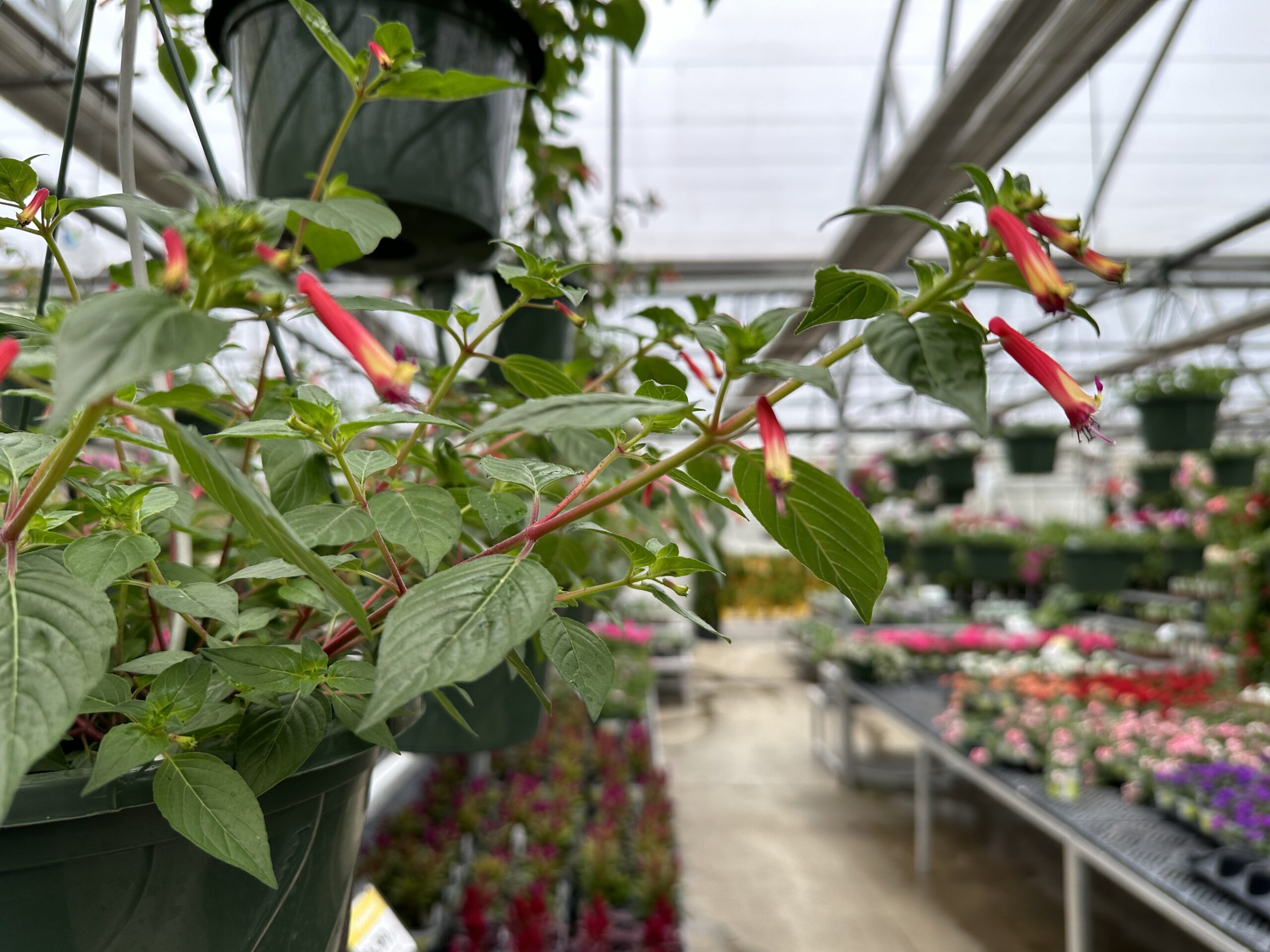
Orange, tubular flowers cover the bushy plants starting in summer and continue until frost. Cigar plants have tons of flowers and are nectar-rich. More flowers mean more hummingbird visits! This annual can be used as a bedding plant or in containers.
Lantana
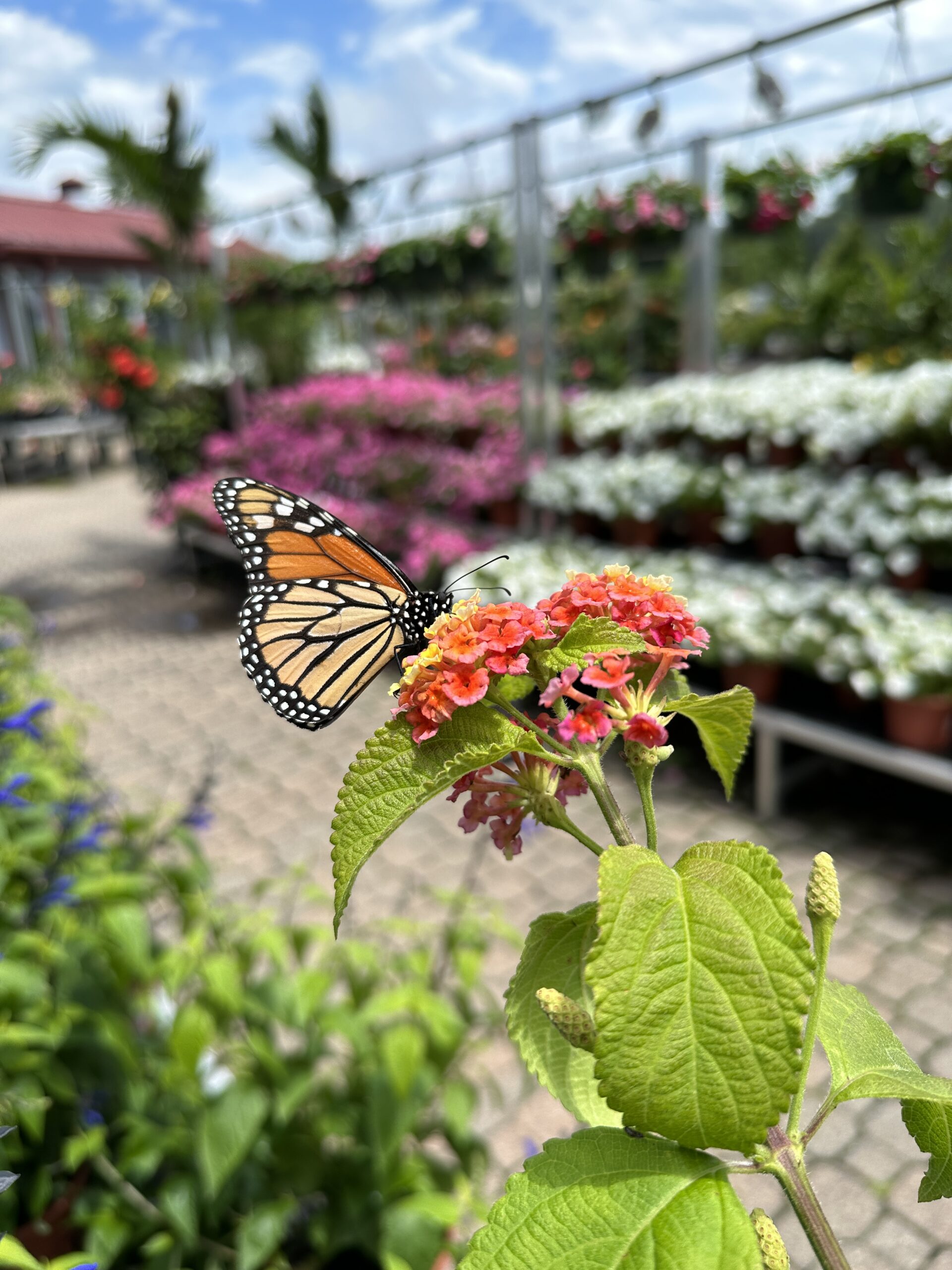
With its bright colors, fragrance, and plenty of nectar, Lantana is frequently visited by pollinators! It is an excellent container plant and able to withstand high temperatures. It is also left alone by deer and rabbits and is relatively disease-free.
FEEDERS
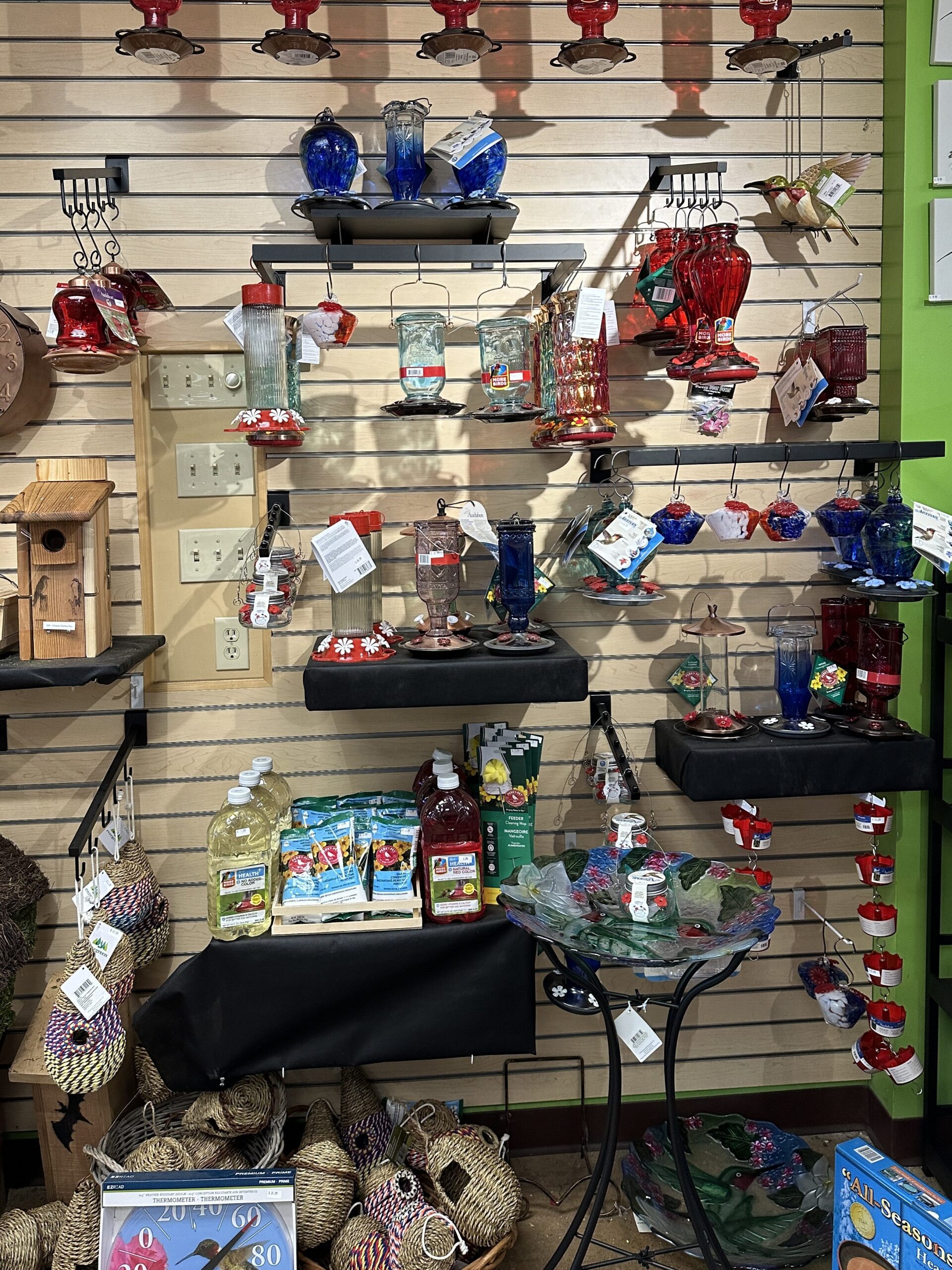
Start getting hummingbirds into your yard right now with our large variety of feeders!
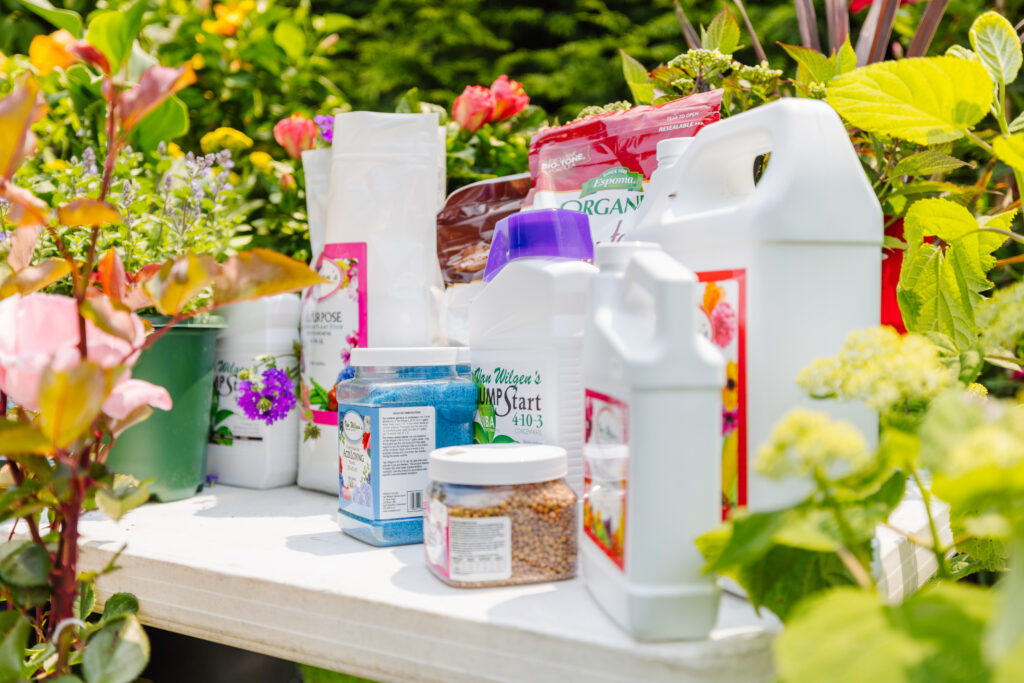
The best way to keep your flowering plants in bloom and get a good harvest from your fruit and veggies is with food… marathon runners can’t run without the pasta dinner the night before, right? It’s the same for our plants – they have a marathon in front of them as they provide you with flowers or food all season long! Keep reading below for the best products to use in combination for each type of plant.
Annuals
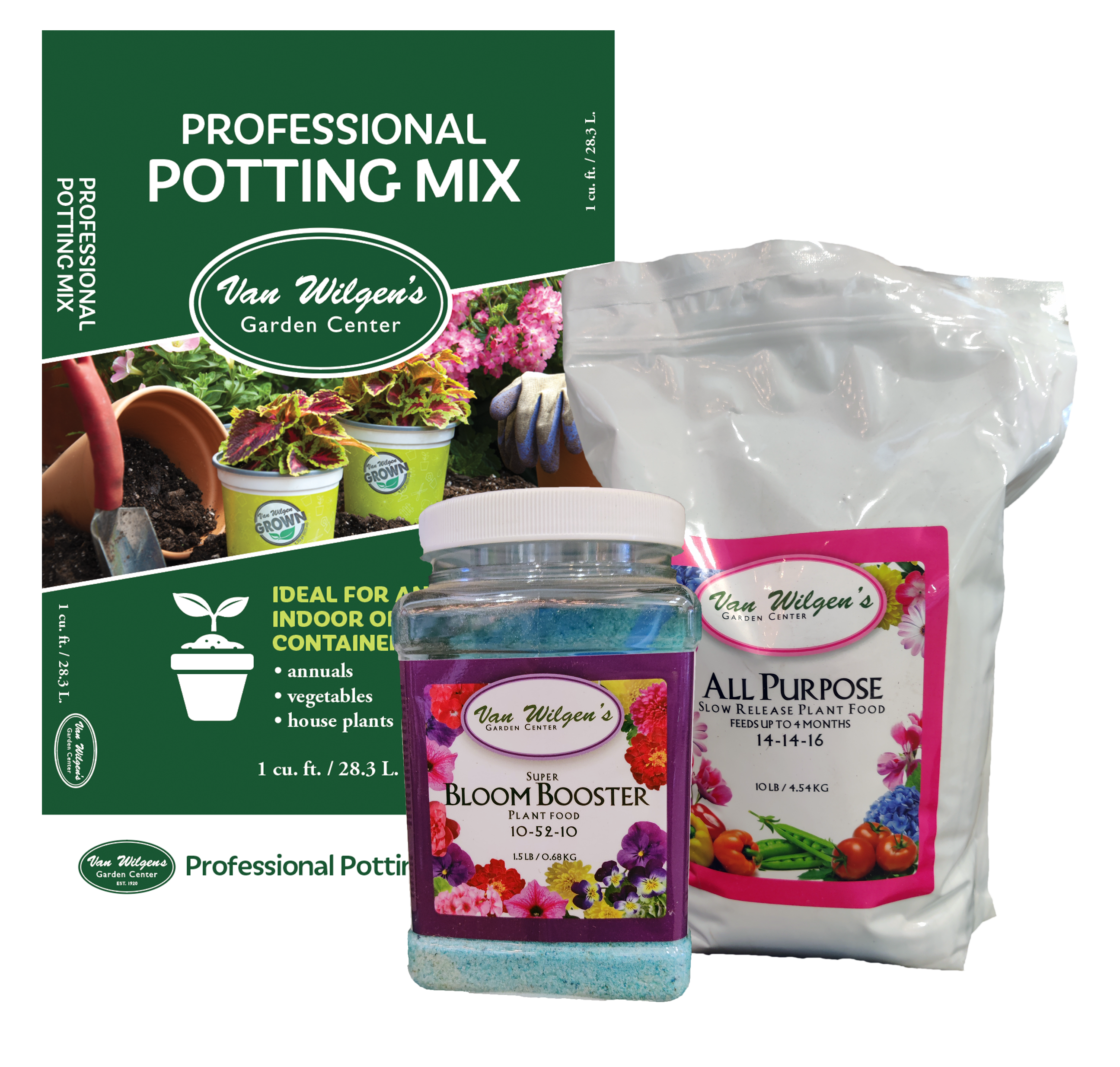
Van Wilgen’s All Purpose Slow Release 14-14-16
A true controlled release formula that feeds plants gradually and evenly. Apply every 2 months in a pot or 3 months in the ground. It is virtually impossible to burn plants with this and it contains valuable minerals in addition to the big 3 (Nitrogen – Phosphorus – Potassium).
Van Wilgen’s Bloom Booster 10-52-10
The BEST KEPT SECRET that shouldn’t be a secret! Our bloom booster truly dissolves in water and has a high phosphorus number, which promotes root growth and blooms. Feed with this every 2 weeks to get the most out of your annuals.
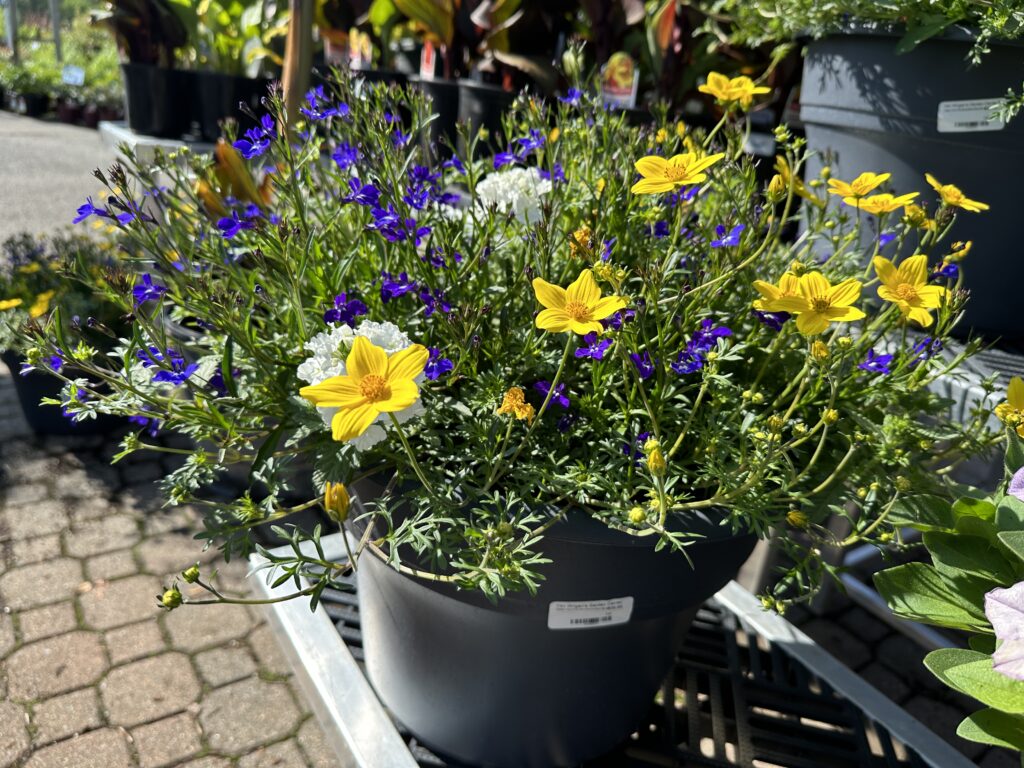
Herbs & Veggies
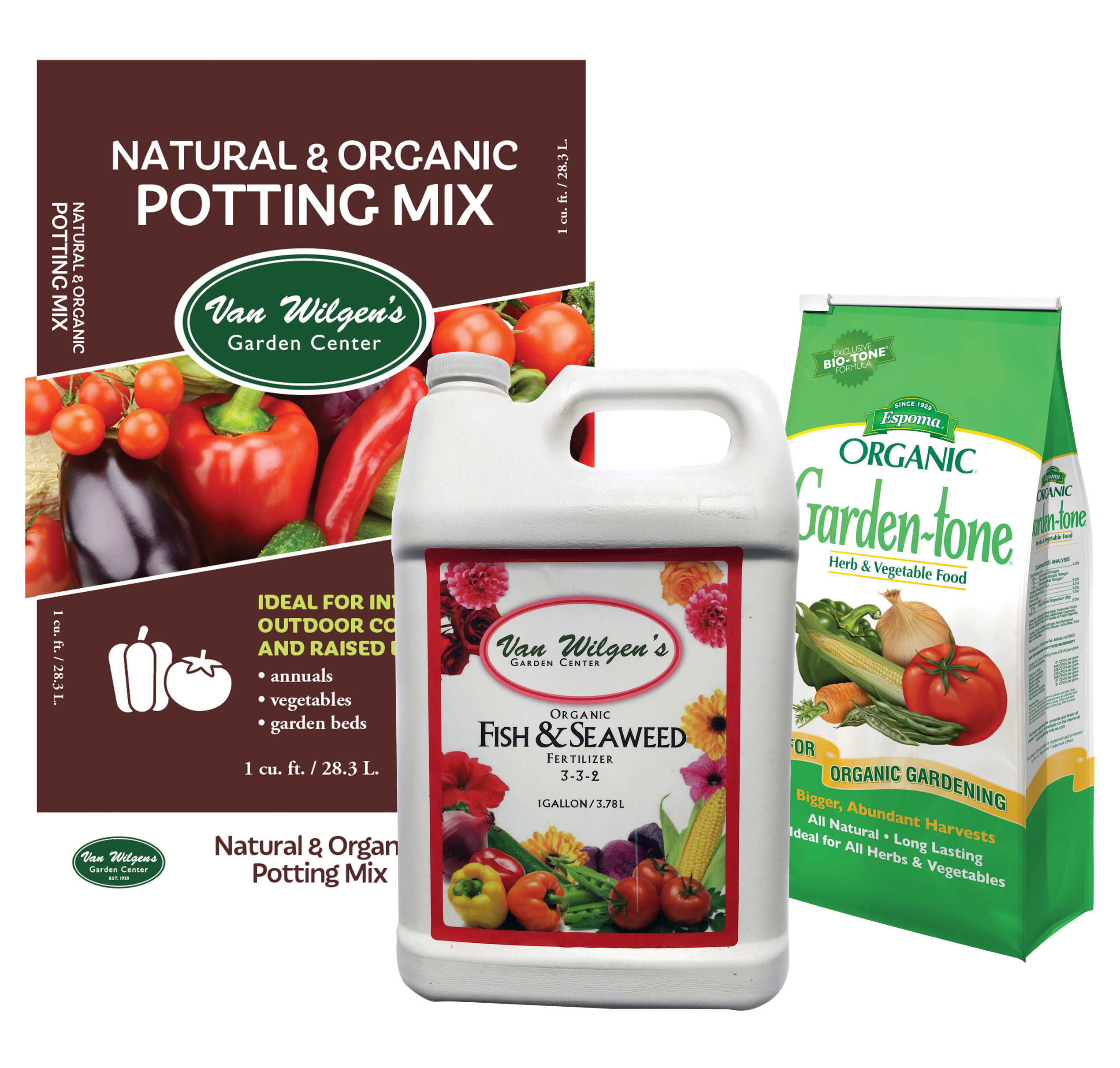
Van Wilgen’s Fish & Seaweed 3-1-1
Grow your edibles organically so you know your food is safe to eat, even on the day of harvest, and add some hard-to-get micronutrients found in the sea. Apply this every 2 weeks!
Espoma Organic Garden Tone 3-4-4 or Espoma Organic Tomato Tone 3-4-6
Use Garden Tone on all herbs and veggies! For herbs, apply during planting and after a large harvest. For vegetables, apply during planting and once per month from May through August. If using Tomato Tone instead (great for all tomato varieties and other fruiting crops like peppers, squash, & melons), apply 10-14 days after planting, and twice a month from May through August for established plants.
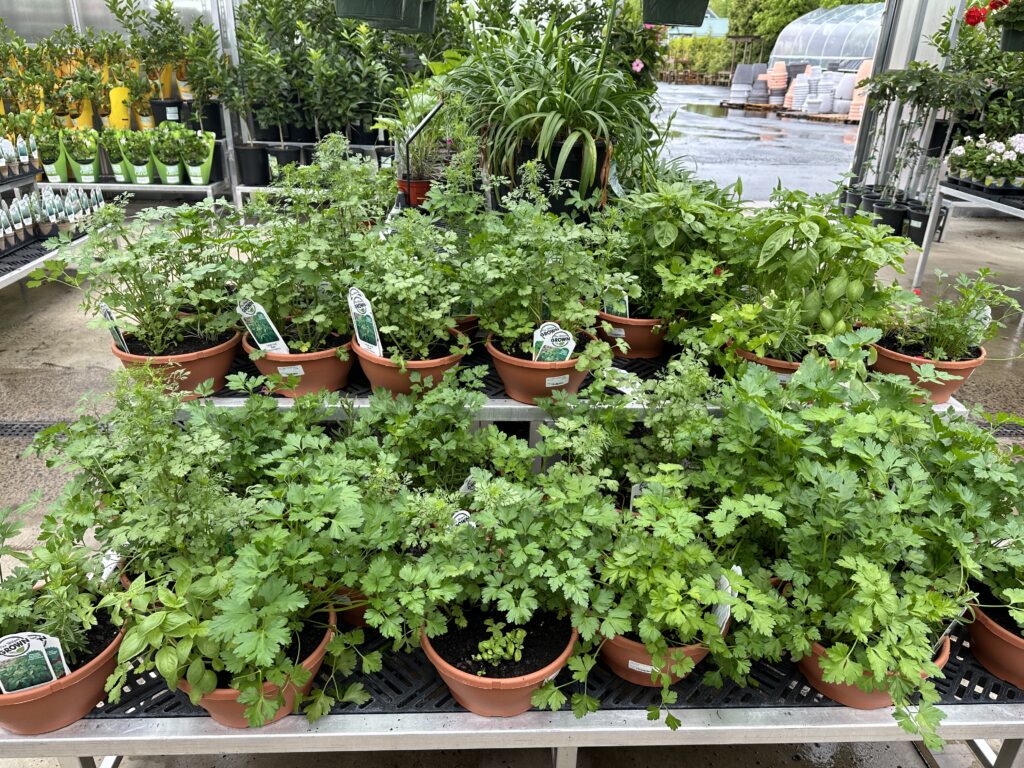
ROSES
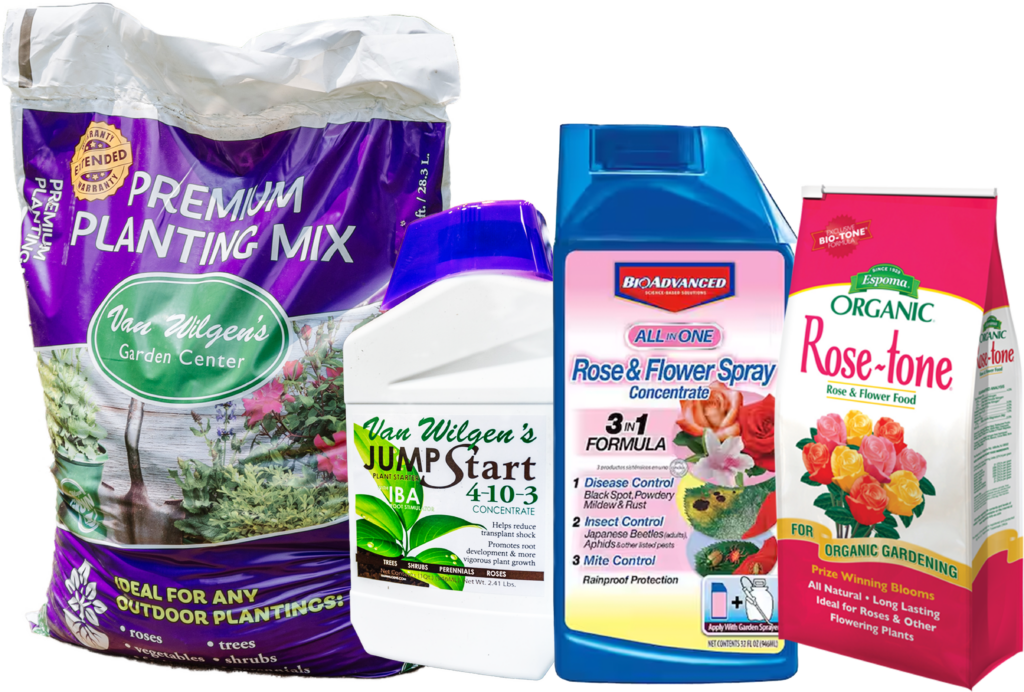
Van Wilgen’s JumpStart 4-10-3
This starter fertilizer has a higher middle number which is phosphorus. Phosphorus promotes root growth and helps get plants established fast. This formula is complete with IBA Root Stimulant that enhances rooting and reduces transplant shock. JumpStart is not just for when planting or transplanting, use it for any plants in the landscape!
BioAdvanced All-in-One Rose & Flower Spray
While there are many disease-resistant roses available now, generally they can be magnets for disease and insects. This is why protection is an absolute must for all roses! Use this product every 1-2 weeks during the growing season to treat or prevent disease, insects, and mites.
Espoma Organic Rose Tone 4-3-2
Use this organic fertilizer for bigger blooms and deep green foliage! Apply during planting new roses, and about once a month from May through September.
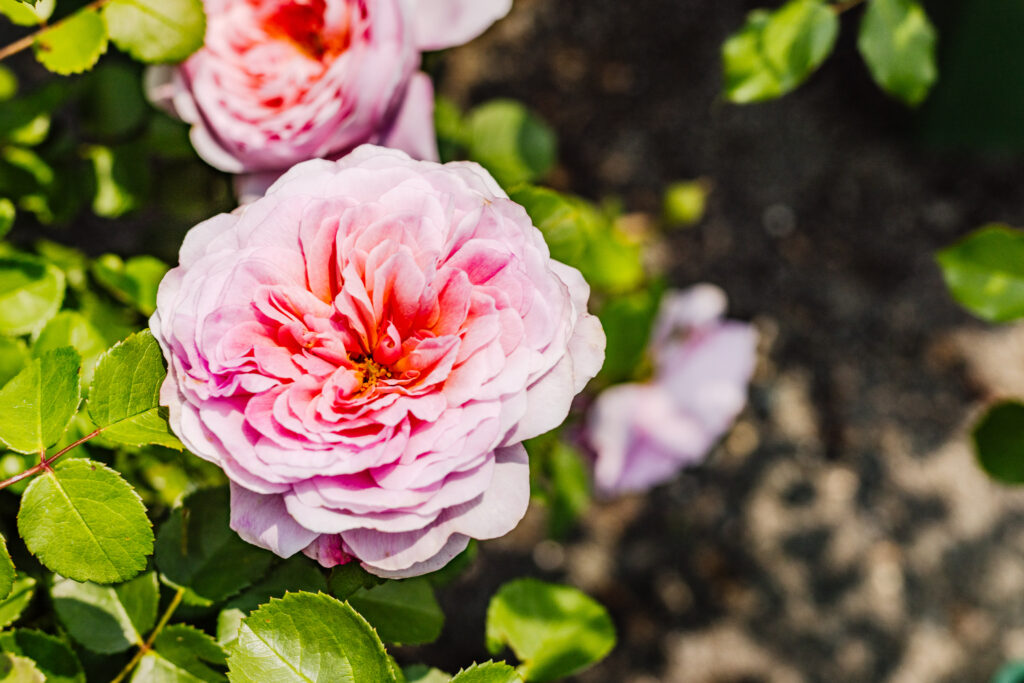
PERENNIALS
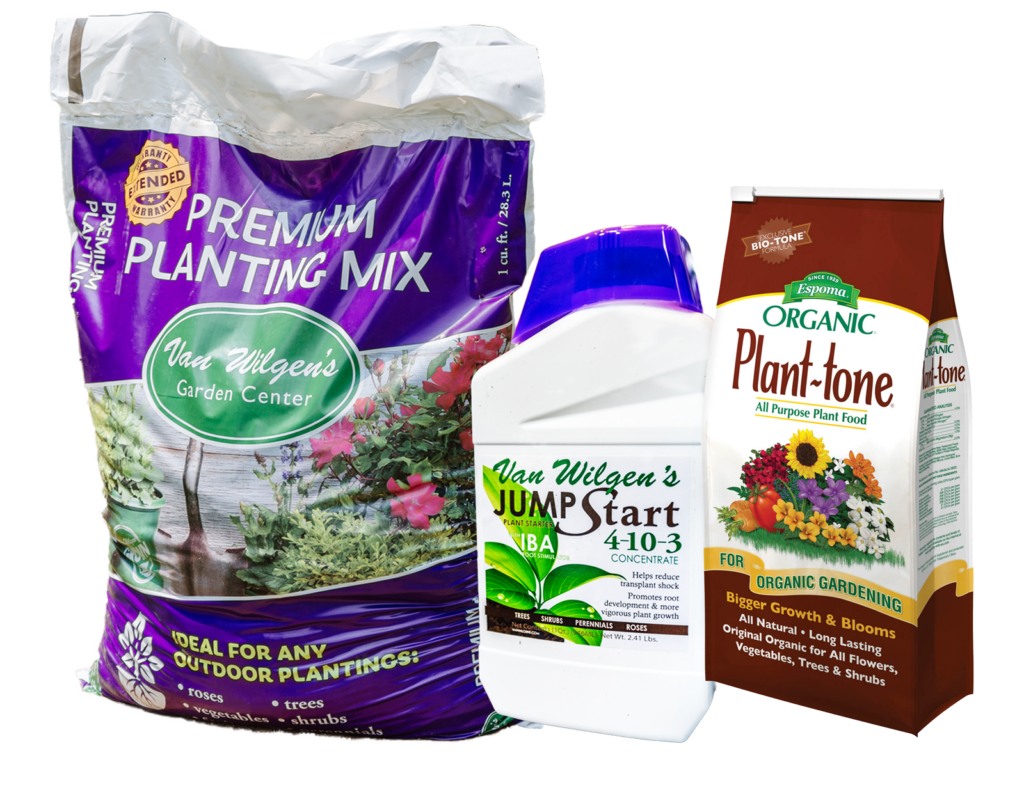
Van Wilgen’s JumpStart 4-10-3
This starter fertilizer has a higher middle number which is phosphorus. Phosphorus promotes root growth and helps get plants established FAST! Complete with IBA Root Stimulant that enhances rooting and reduces transplant shock. JumpStart is not just for when planting or transplanting, use it for any plants in the landscape, and it will benefit them too.
Espoma Organic Plant Tone 5-3-3
Use this organic fertilizer for greener foliage and faster growth! Apply when planting new perennials, and about once a month during the growing season.
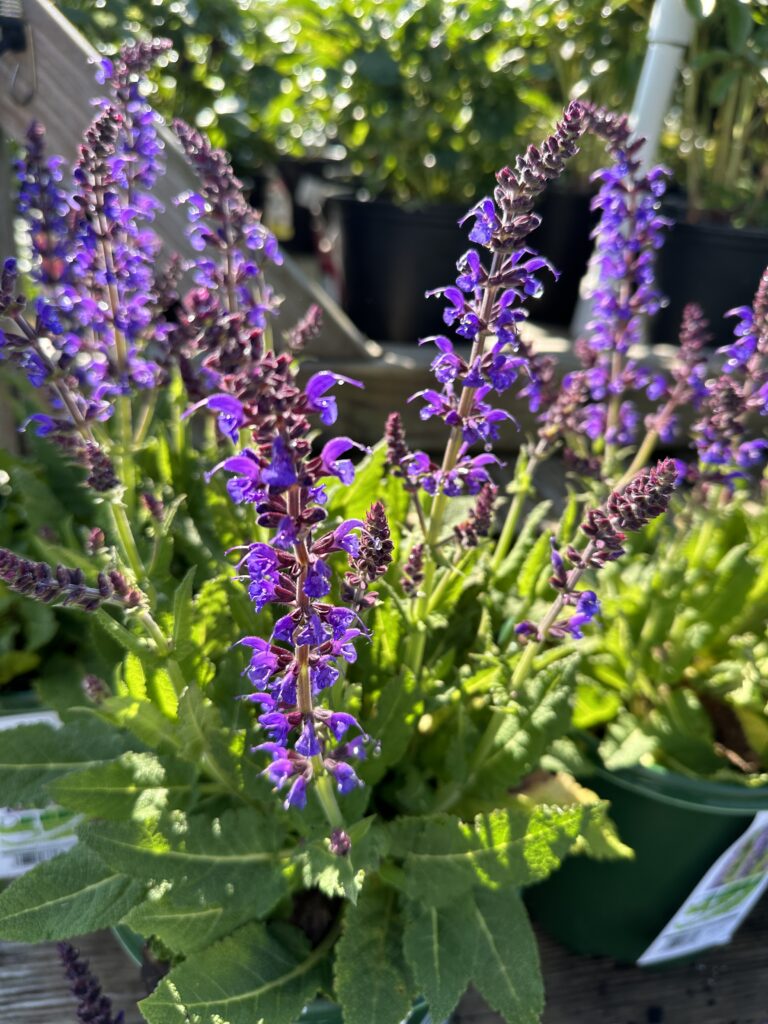
Tips:
1. Many plant signs around Van Wilgen’s have a little key on the bottom right corner with our suggested soil blend and fertilizer. These are there to help you pick the correct products to ensure the success of your plants!
2. Follow the recommendations on the bag. Remember like medicine, just because it says 1 tablespoon on the directions doesn’t mean that 2 is twice as good!

Have you noticed these leaves everywhere? Don’t worry, these are NOT poison ivy… they are maples!
Maple seedlings are popping up in your lawns and garden beds, and all over the landscape! The reason is the weather. Two years ago we had a drought, and last year we had rain almost every weekend. Many maples got foliar diseases from the rain and from being so wet, so existing trees put out a HUGE seed set!
If you have them in your lawn, you can deal with them by mowing until they’re eventually gone. For garden beds, you’ll want to get rid of them now before the tap root gets too big. Remember, maples put out roots pretty quickly so don’t wait! A simple weed killer will work great, organic or synthetic, your choice.